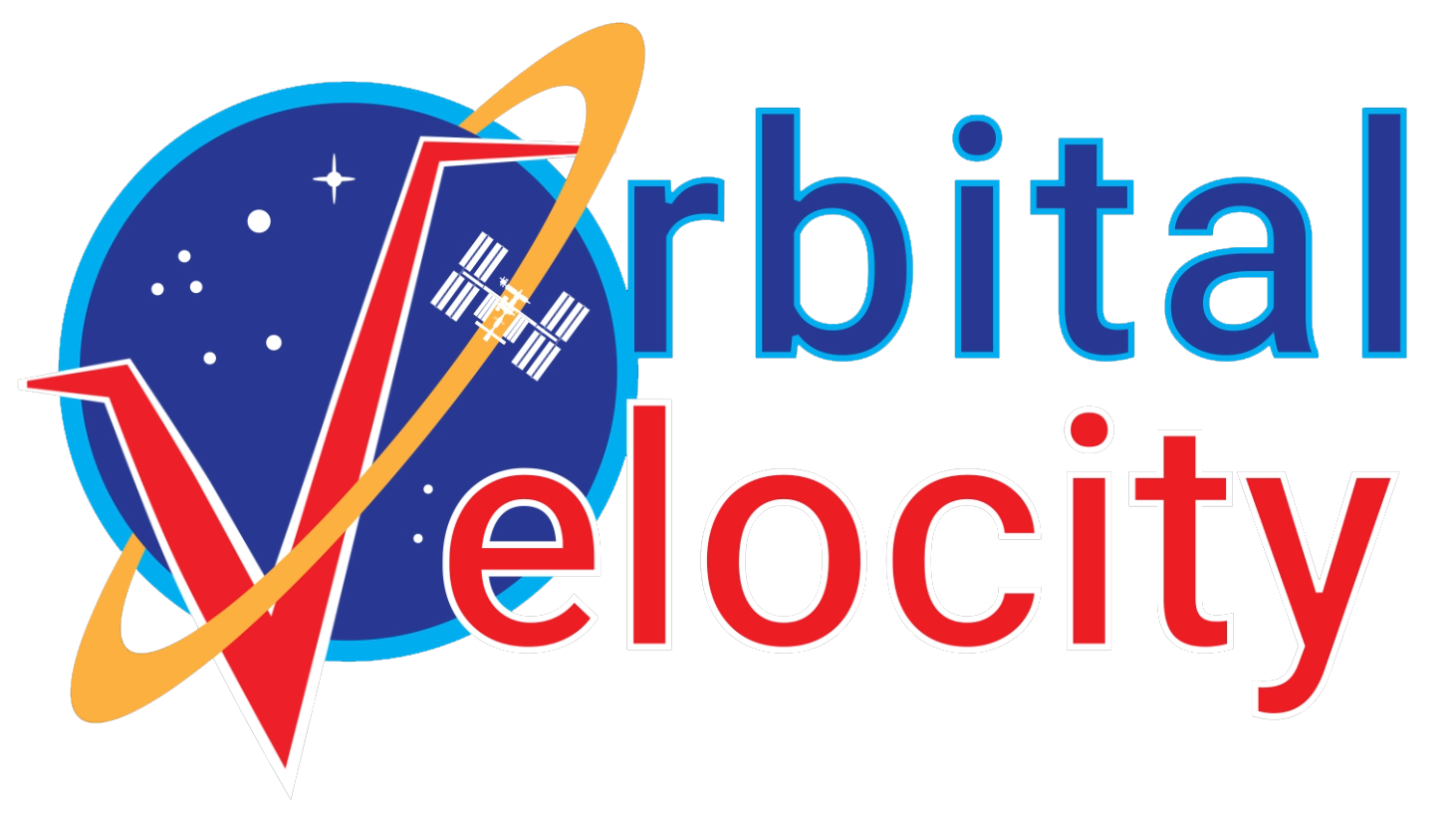Pieces built across oceans meet for the first time in orbit
The International Space Station was assembled in orbit primarily between 1998 and 2011. These are some of the major construction and historical milestones.

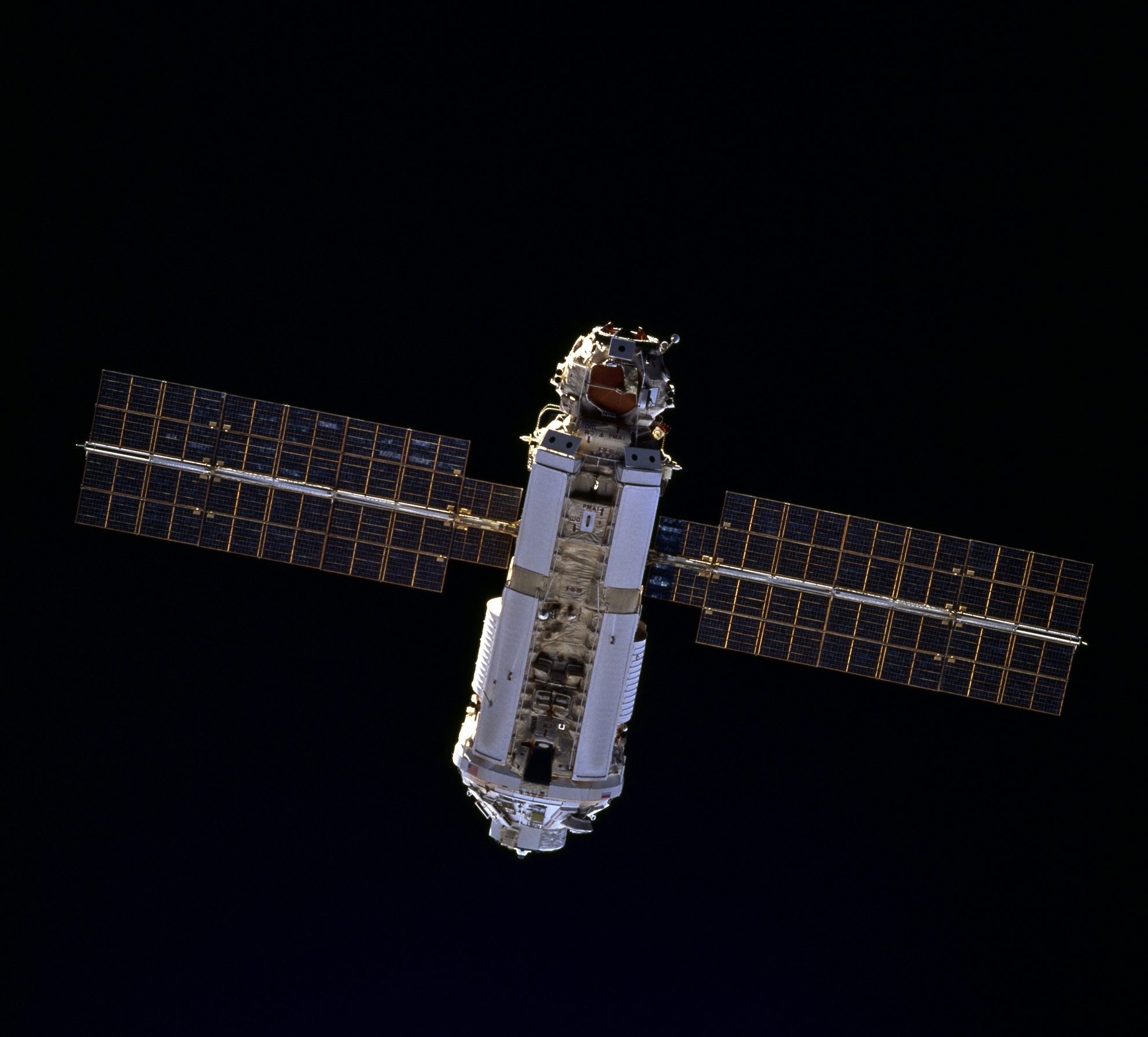
Zarya
Zarya, as seen by the crew of STS-88 before capturing and attaching it to the Unity module. Photo Credit: NASA

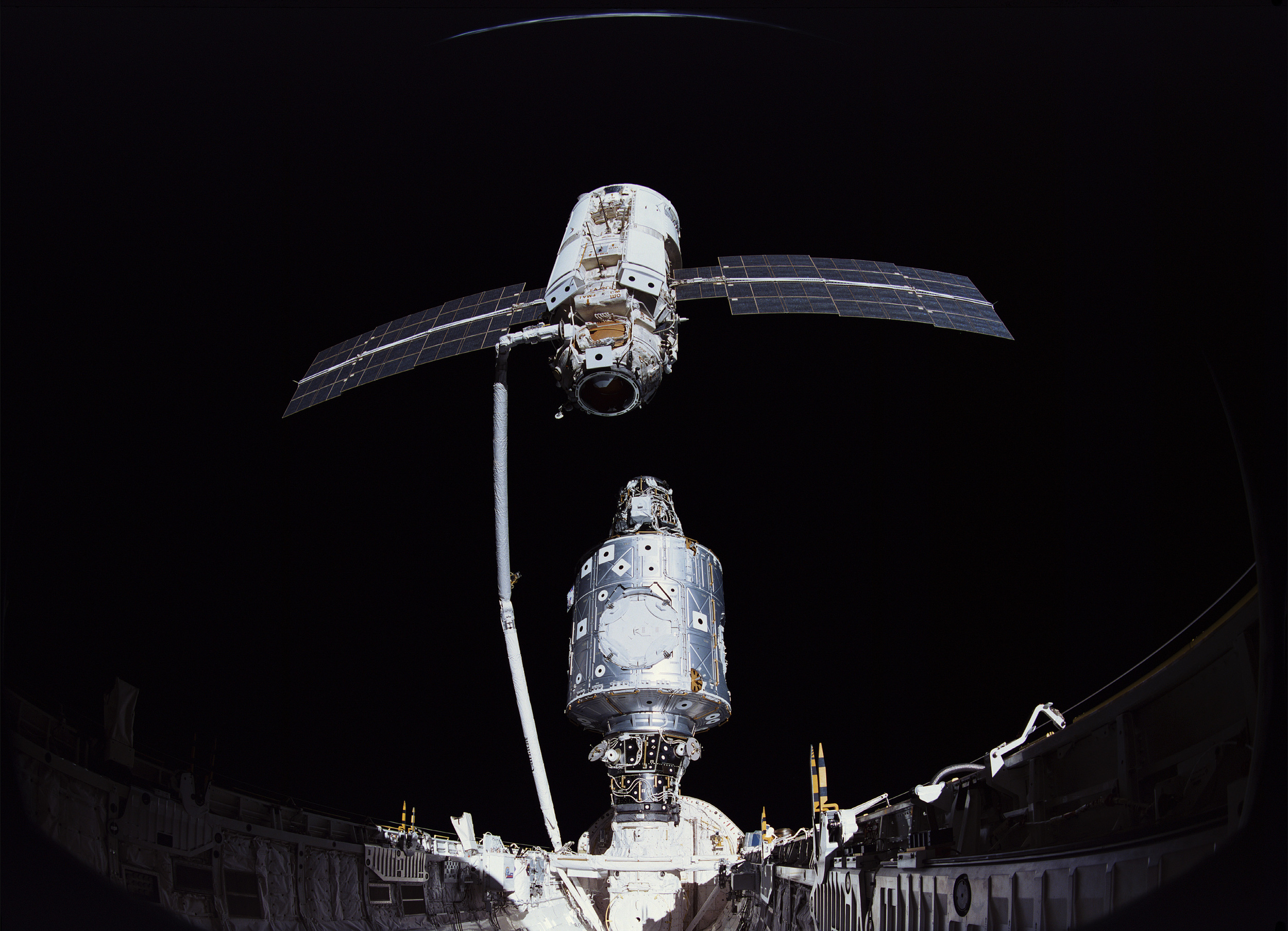
Zarya capture
Four days after STS-88 launched, astronaut Nancy Currie gappled Zarya with the robotic Canadarm. At 9:07 p.m. EST Dec. 6 (1:07 GMT Dec. 7), 1998, Zarya was attached to Unity. Photo Credit: NASA
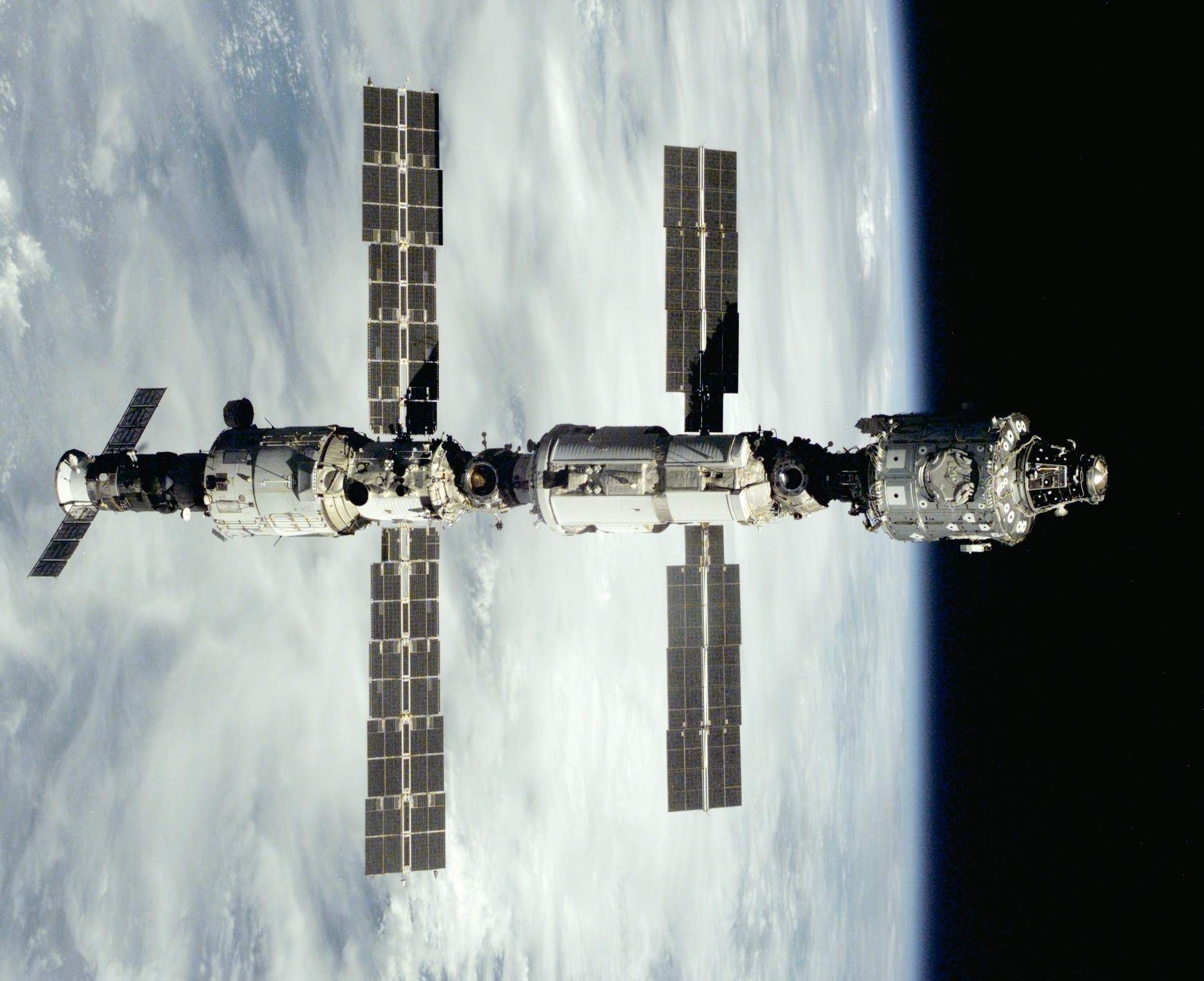
Zvezda
The Zvezda service module, launched on July 12, 2000, is docked to the International Space Station. Photo Credit: NASA
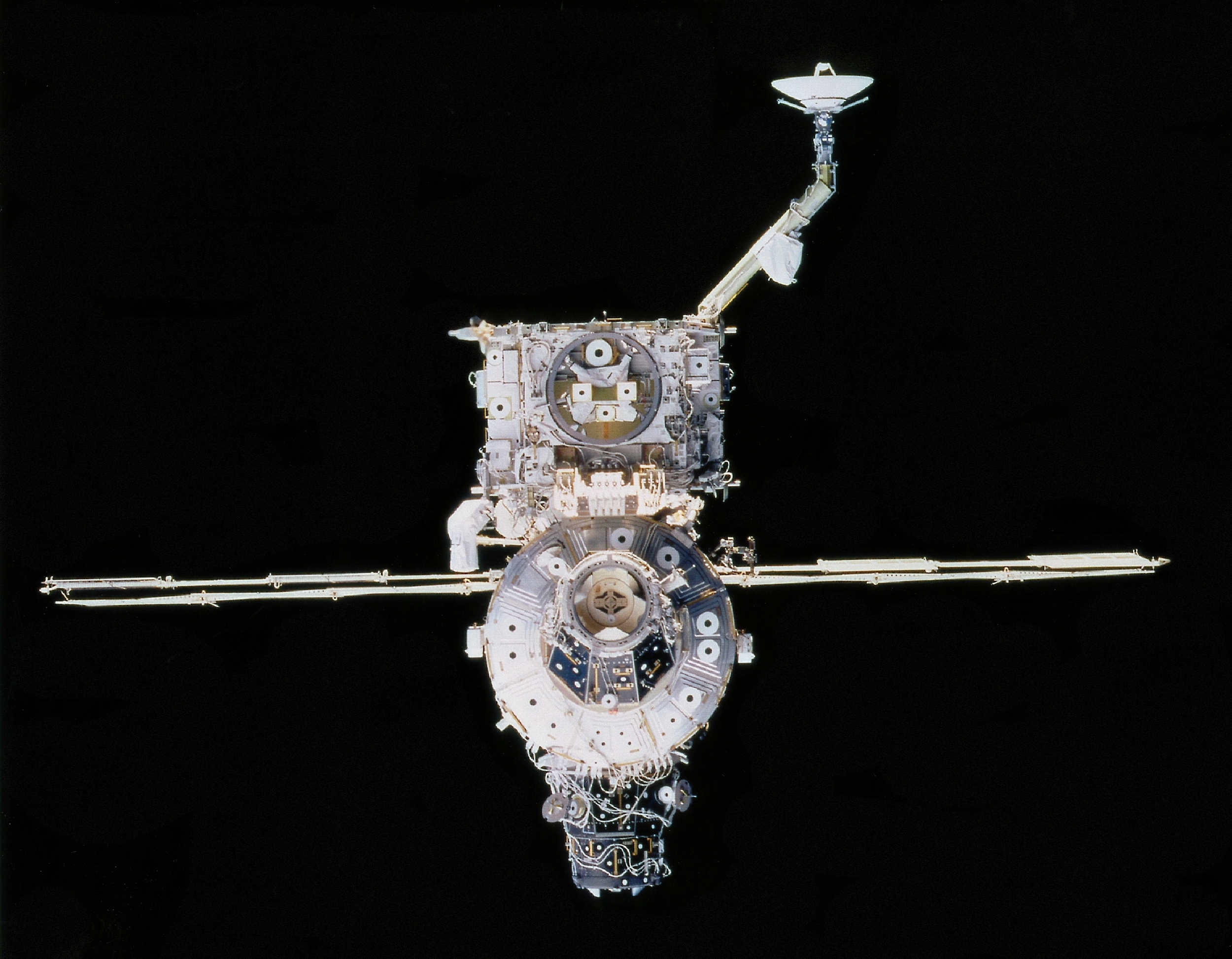
Z1 Truss
Space shuttle Discovery launched the Z1 Truss segement, along with a third Pressurized Mating Adapter, Oct. 11, 2000. Photo Credit: NASA

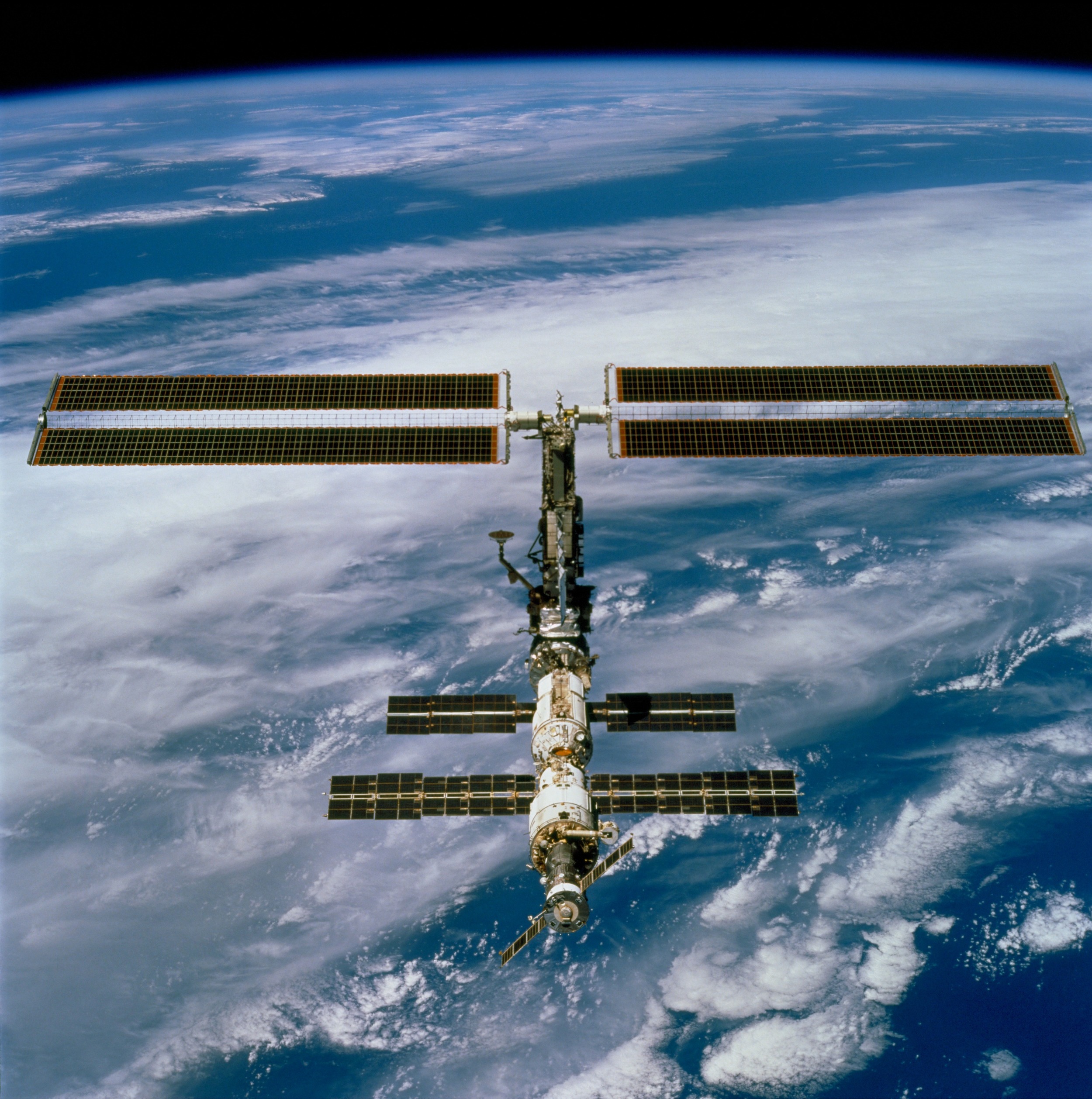
P6 Truss
Space shuttle Endeavour delivered the P6 Truss with it's massive solar array wings on Nov. 30, 2000. Photo Credit: NASA
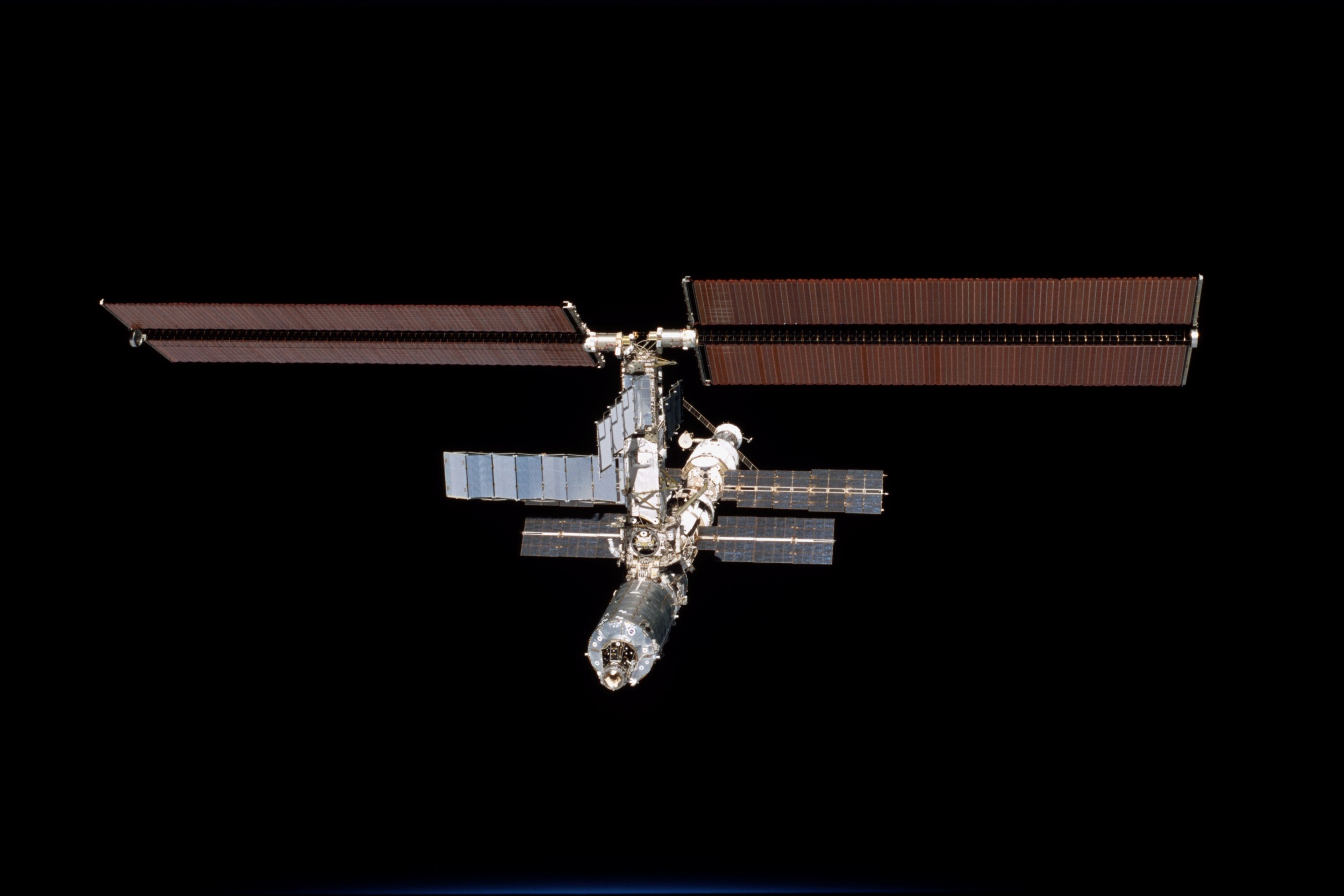
Destiny
The first laboratory module, Destiny, was delivered by space shuttle Atlantis Feb. 7, 2001. Photo Credit: NASA
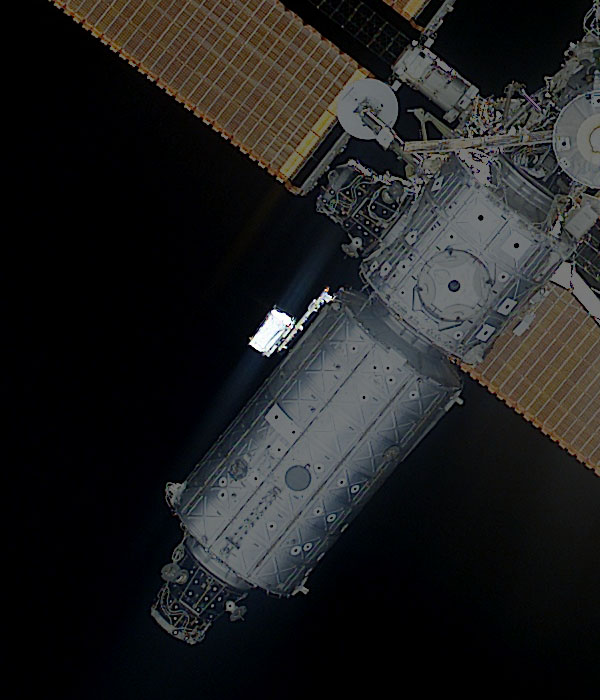
ESP-1
Discovery brought External Stowage Platform-1 on March 3, 2001. It was attached to the side of Destiny. Photo Credit: NASA
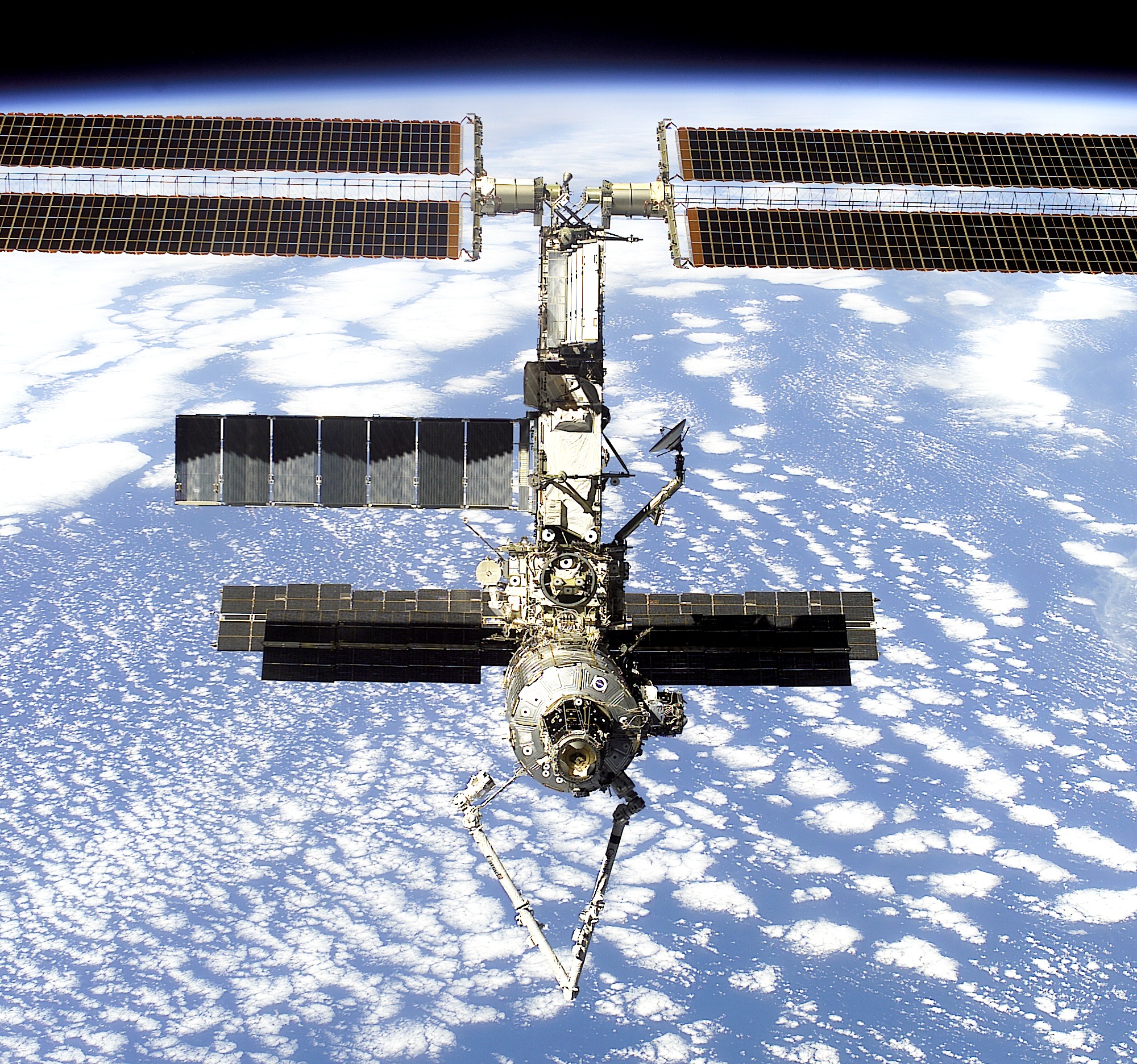
Canadarm2
A new robotic arm, Canadarm2, was brought to ISS by the crew of STS-100 on April 19, 2001. Photo Credit: NASA
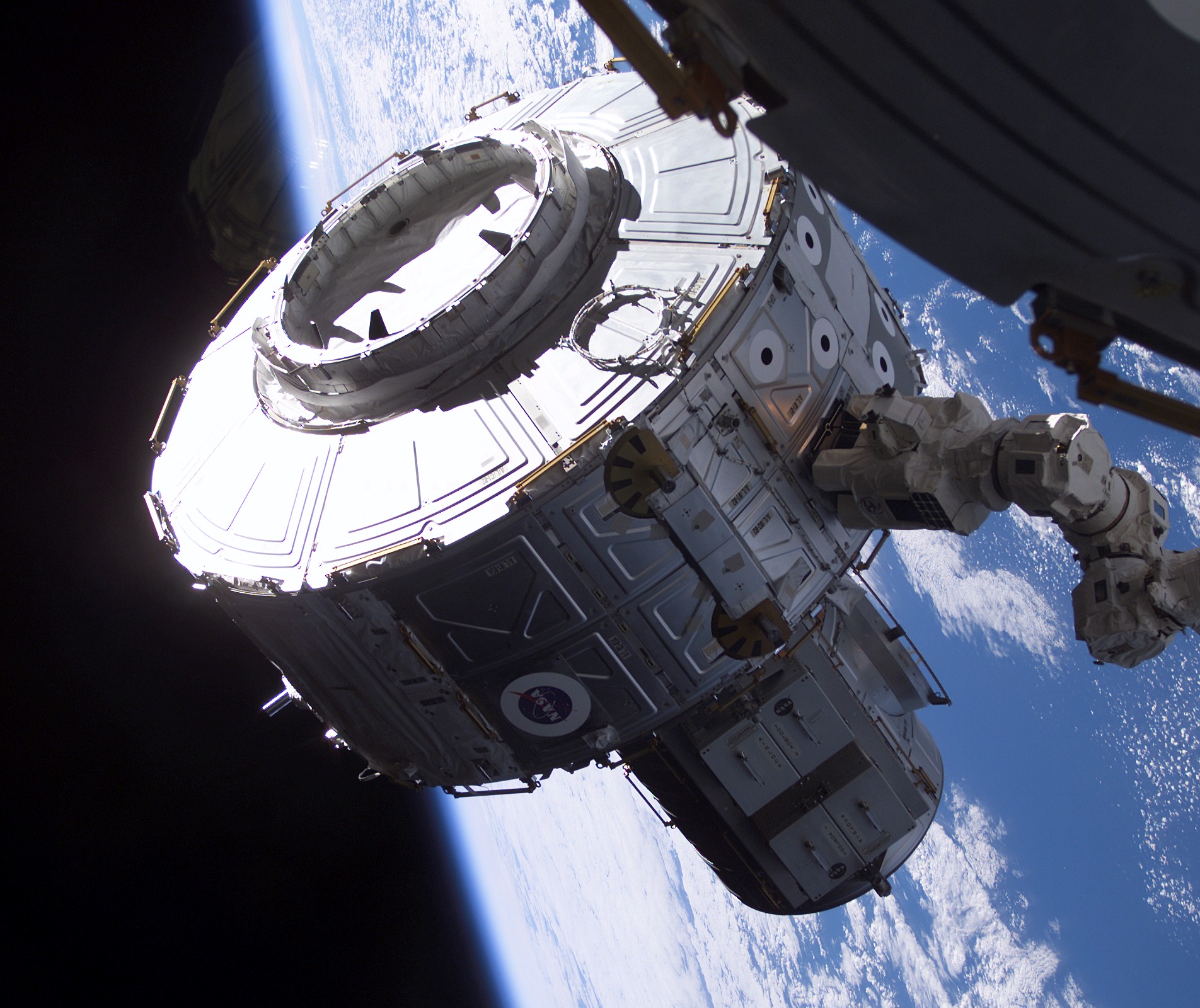
Quest airlock
Atlantis delivered the U.S. airlock, Quest, on July 12, 2001. Photo Credit: NASA

Quest on station
Quest, middle-right, is seen from the departing Atlantis. Photo Credit: NASA
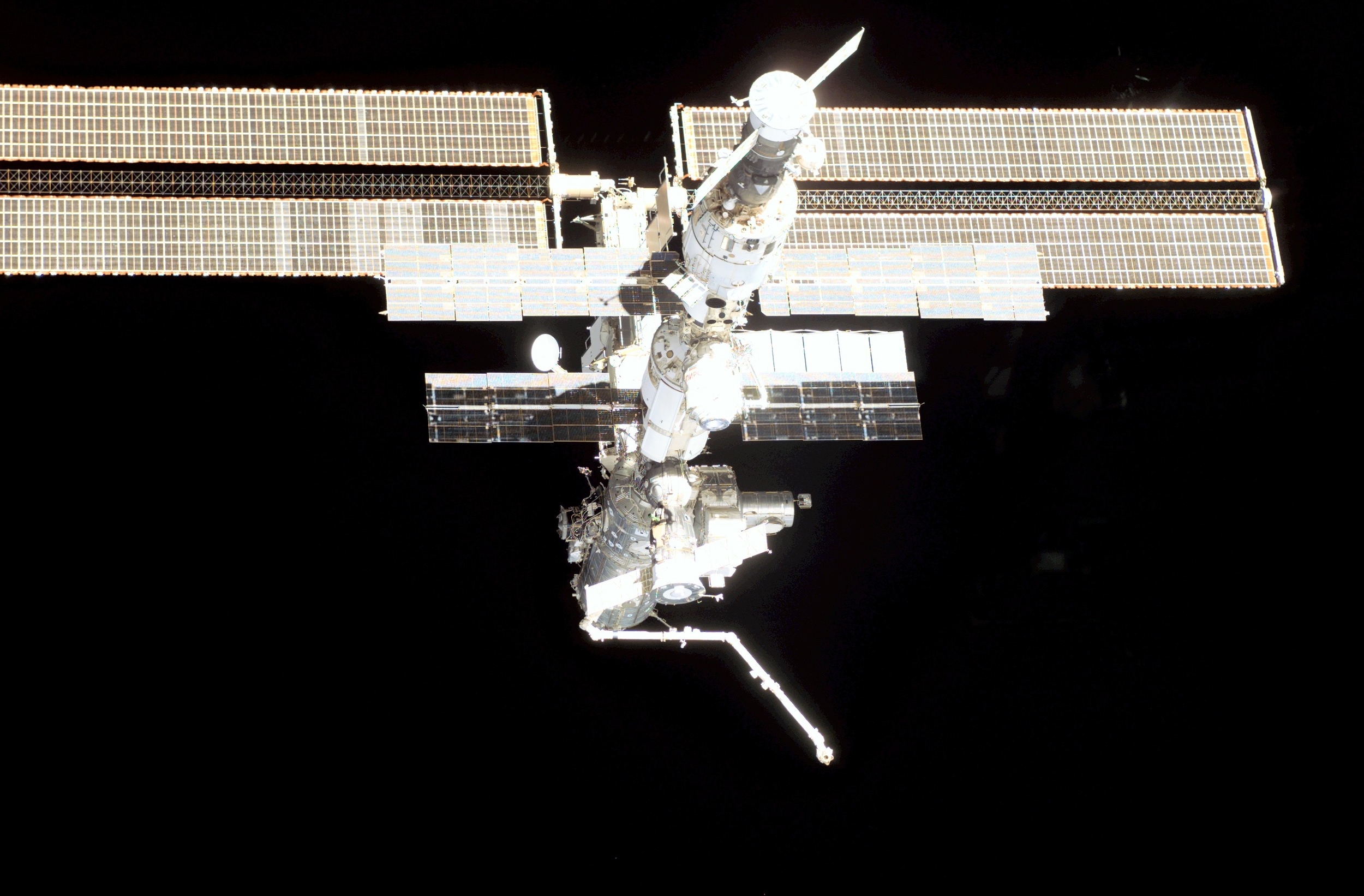
Pirs docking compartment
Pirs is launched by a special Progress freighter on Sept. 14, 2001. It was docked to the Earth-facing docking port of Zarya days later. Photo Credit: NASA
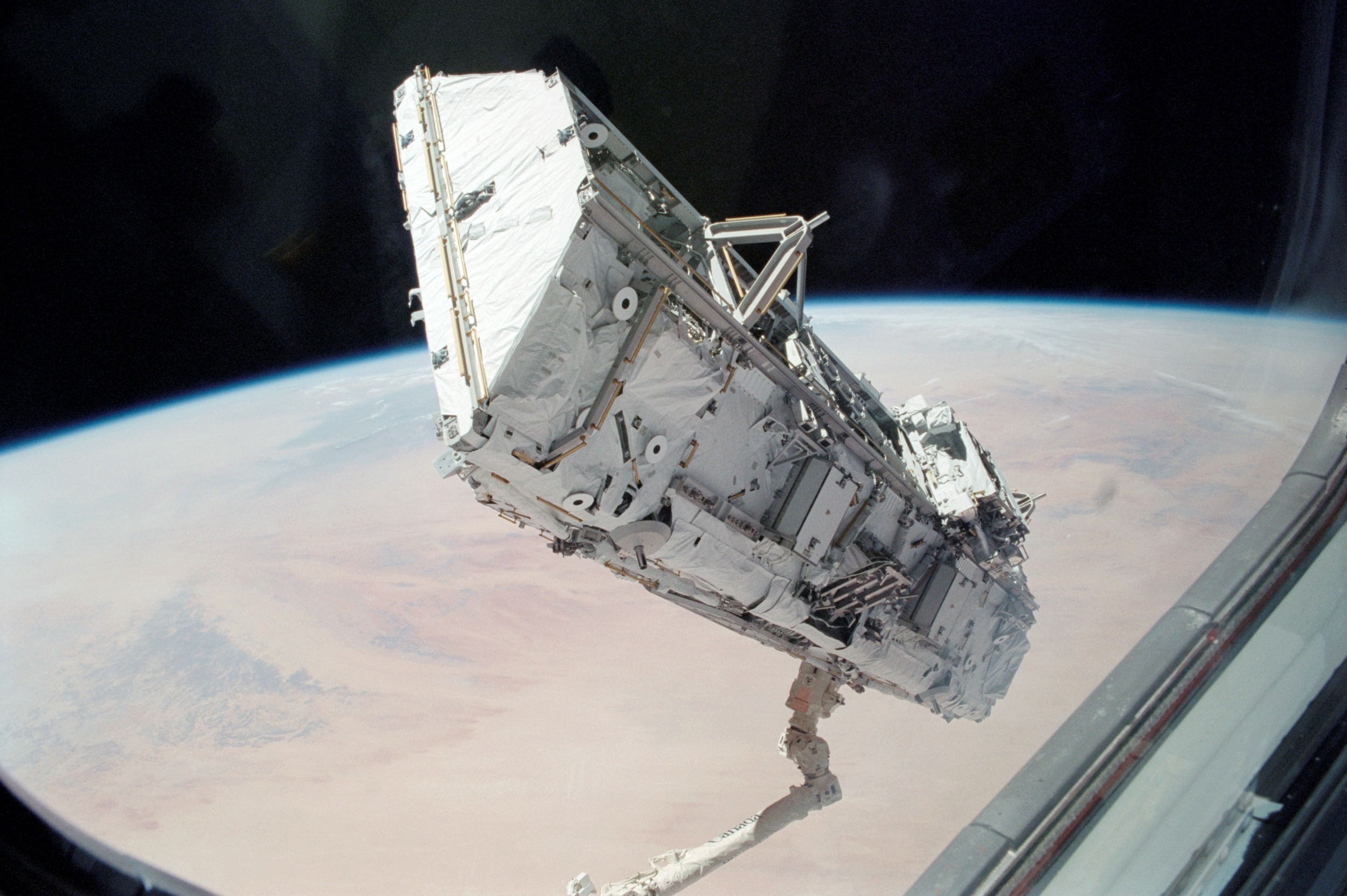
Canadarm2 holds S0 Truss
The first piece of the Integrated Truss Structure, the S0 Truss was launched via space shuttle Atlantis on April 8, 2002. Photo Credit: NASA
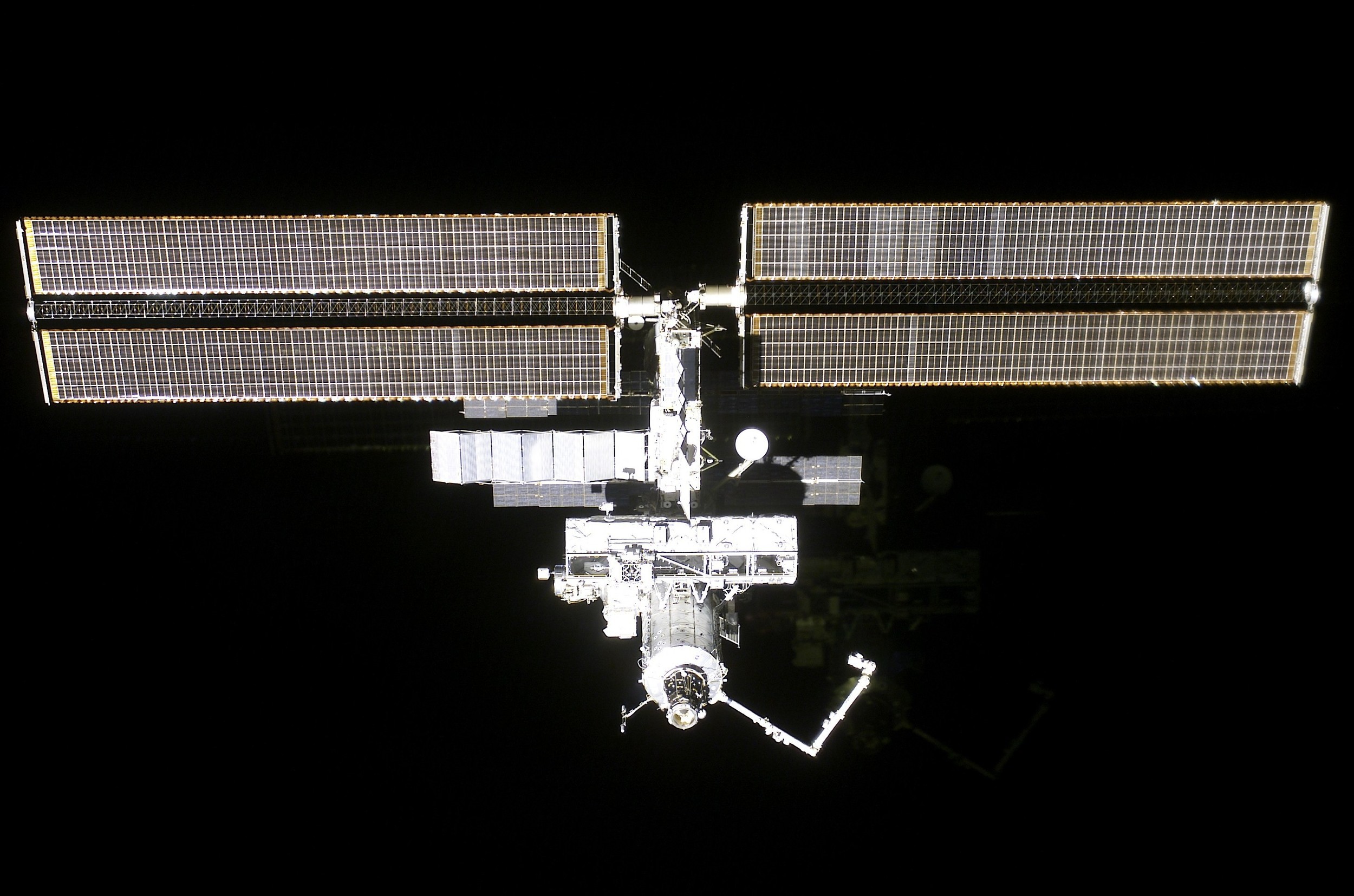
S0 Truss attached
The S0 Truss is seen attached to the Destiny laboratory. Photo Credit: NASA
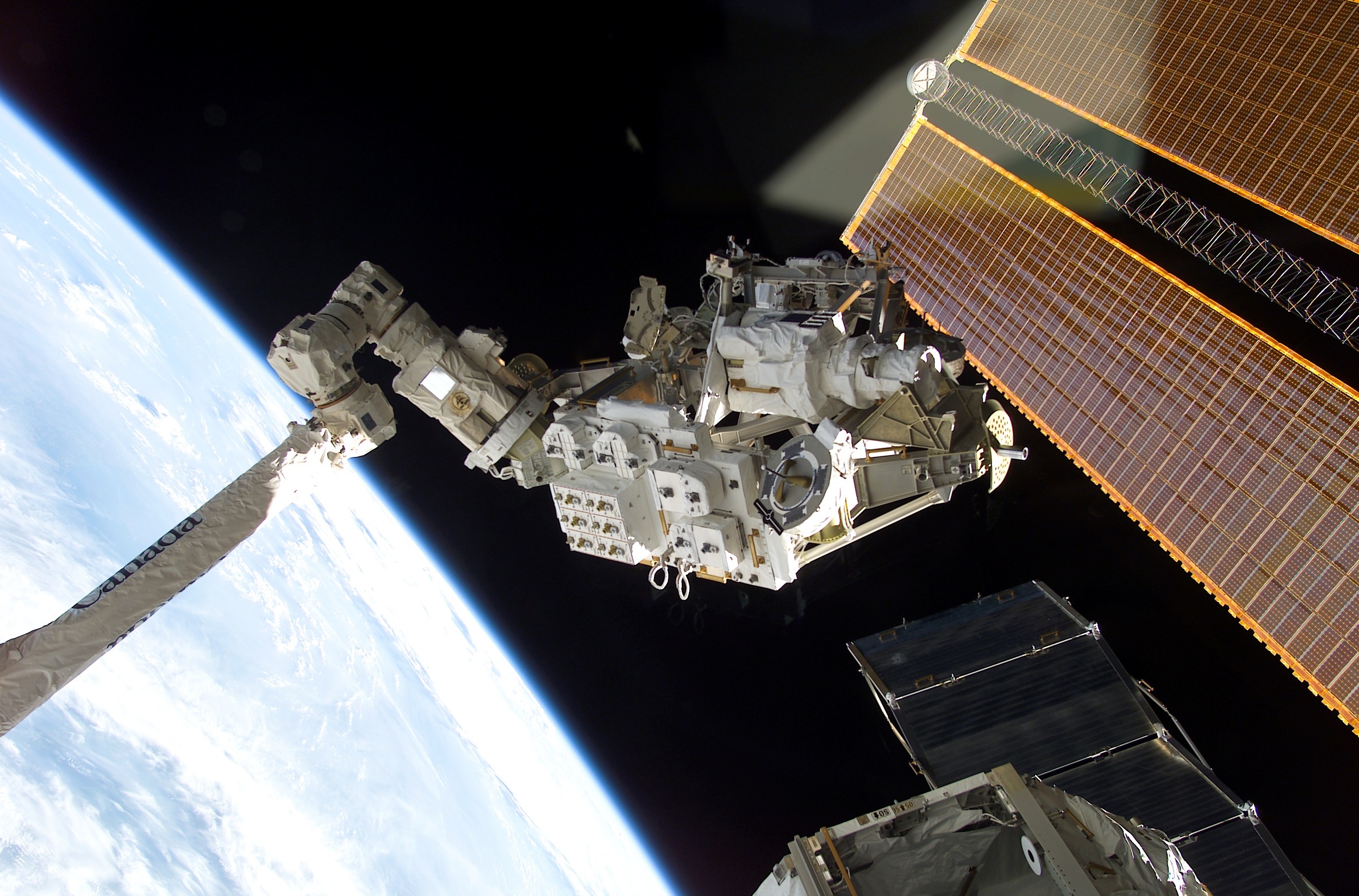
A cart for the truss
The Mobile Base System was delivered to the ISS in June 2002 by space shuttle Endeavour. Photo Credit: NASA
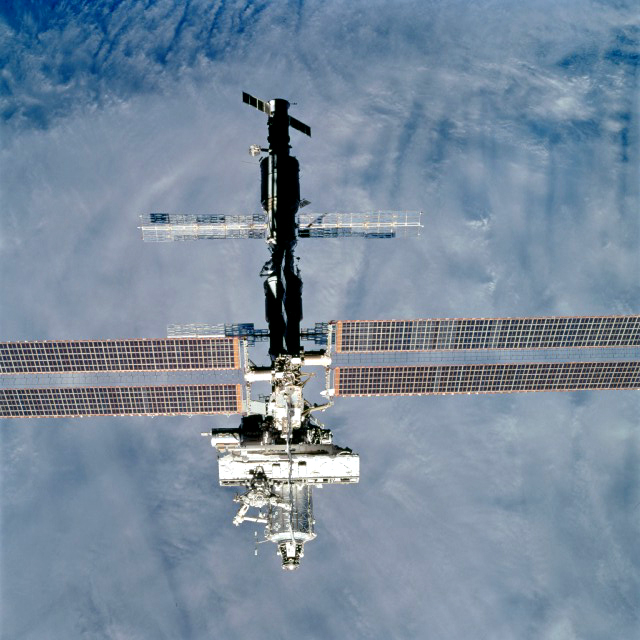
Mobile Base System
The MBS is attached to the S0 Truss. Photo Credit: NASA
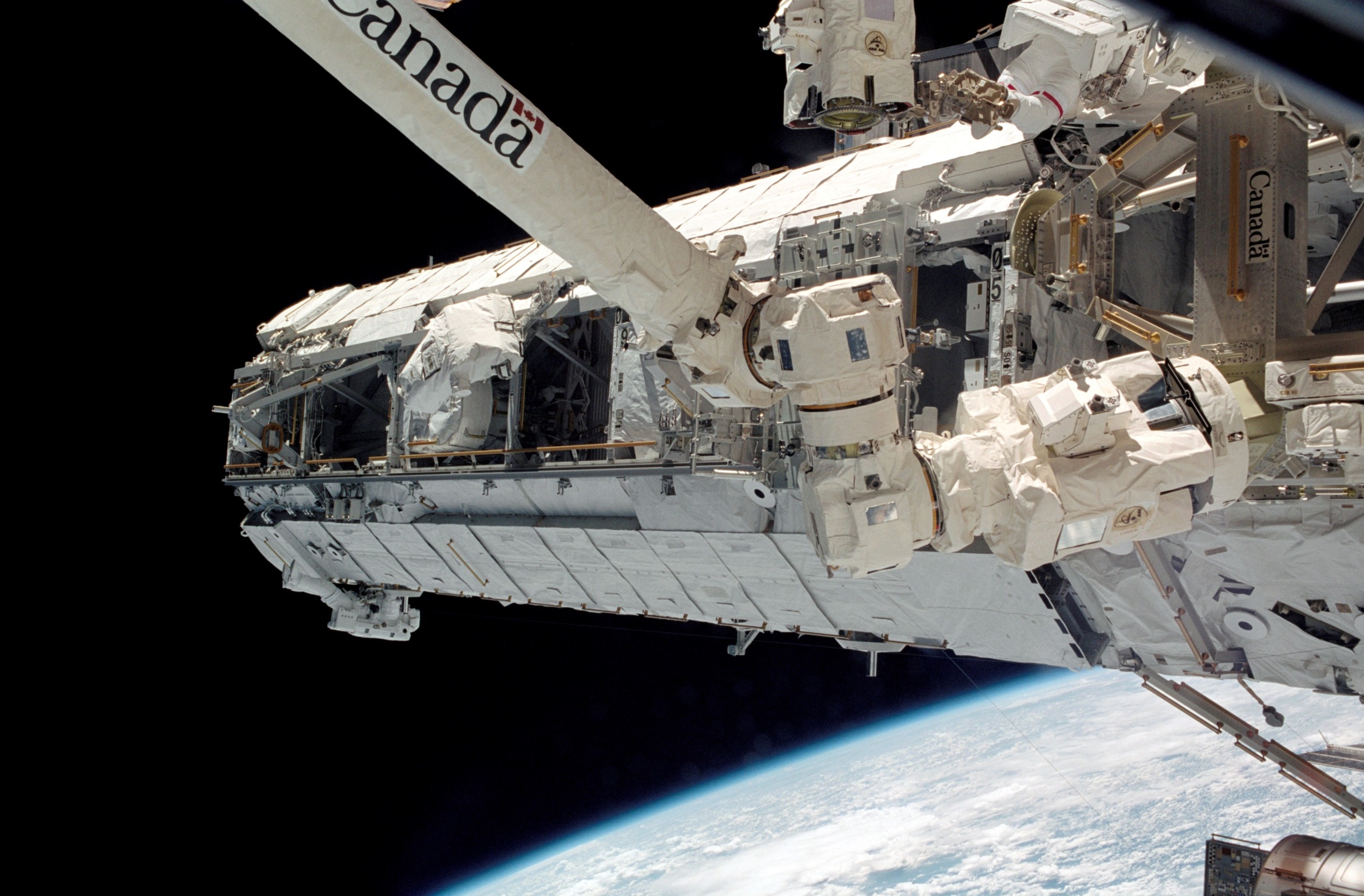
S1 Truss
The first starboard piece of the Integrated Truss Structure arrives in October 2002. Photo Credit: NASA
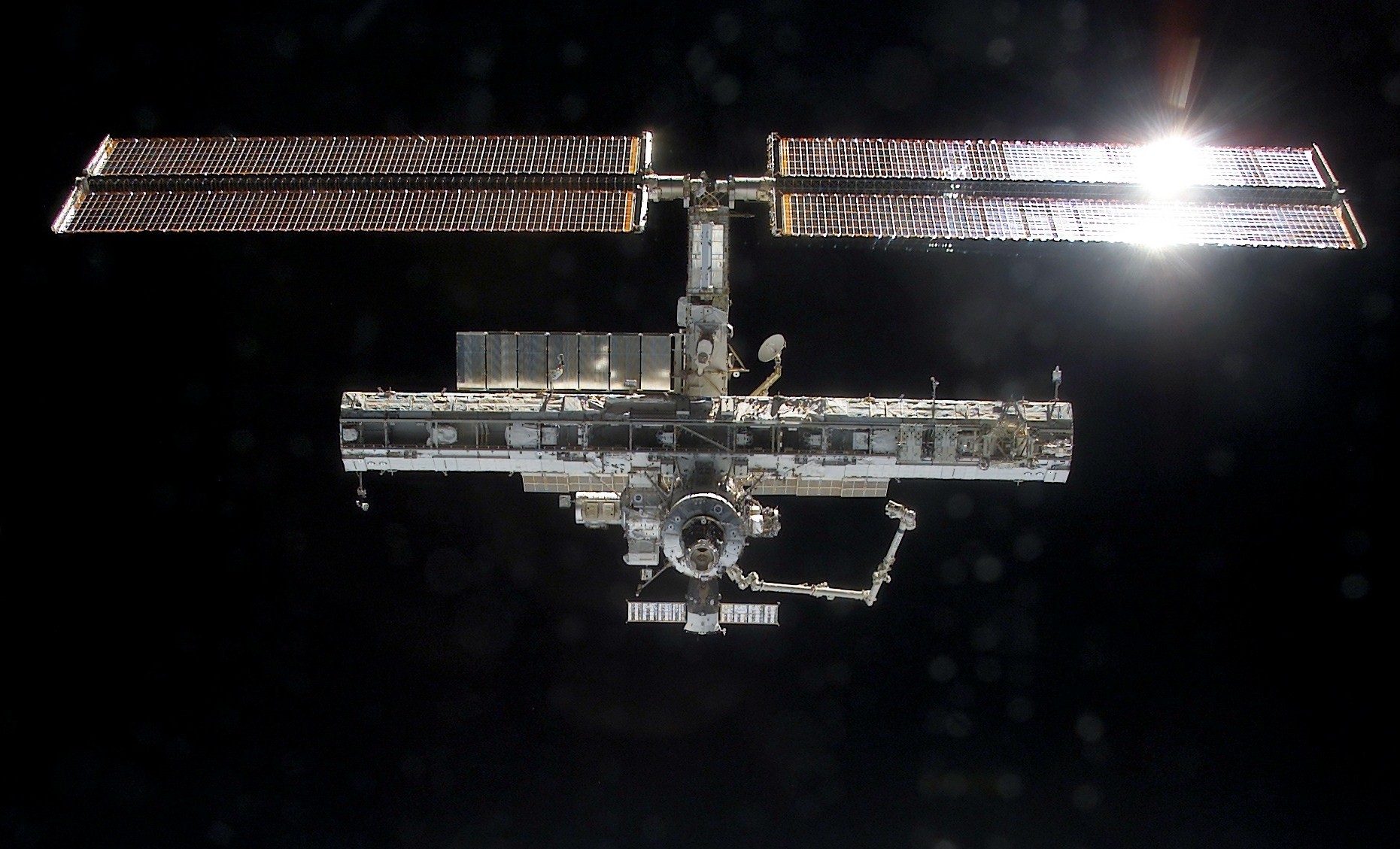
P1 Truss
The P1 Truss is attached in November 2002. It is the last piece to arrive before the tragedy of STS-107 on February 1, 2003. Photo Credit: NASA

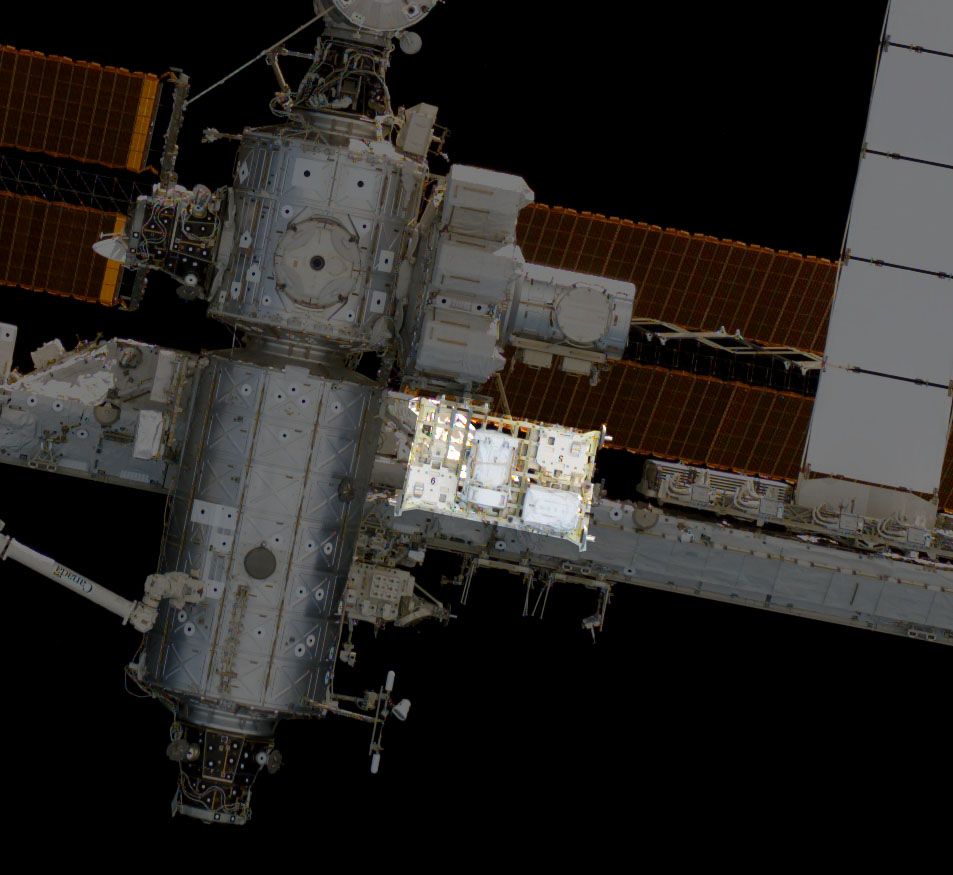
ESP-2
ESP-2 was delivered on the 2005 return-to-flight mission of the space shuttle program, STS-114. Photo Credit: NASA
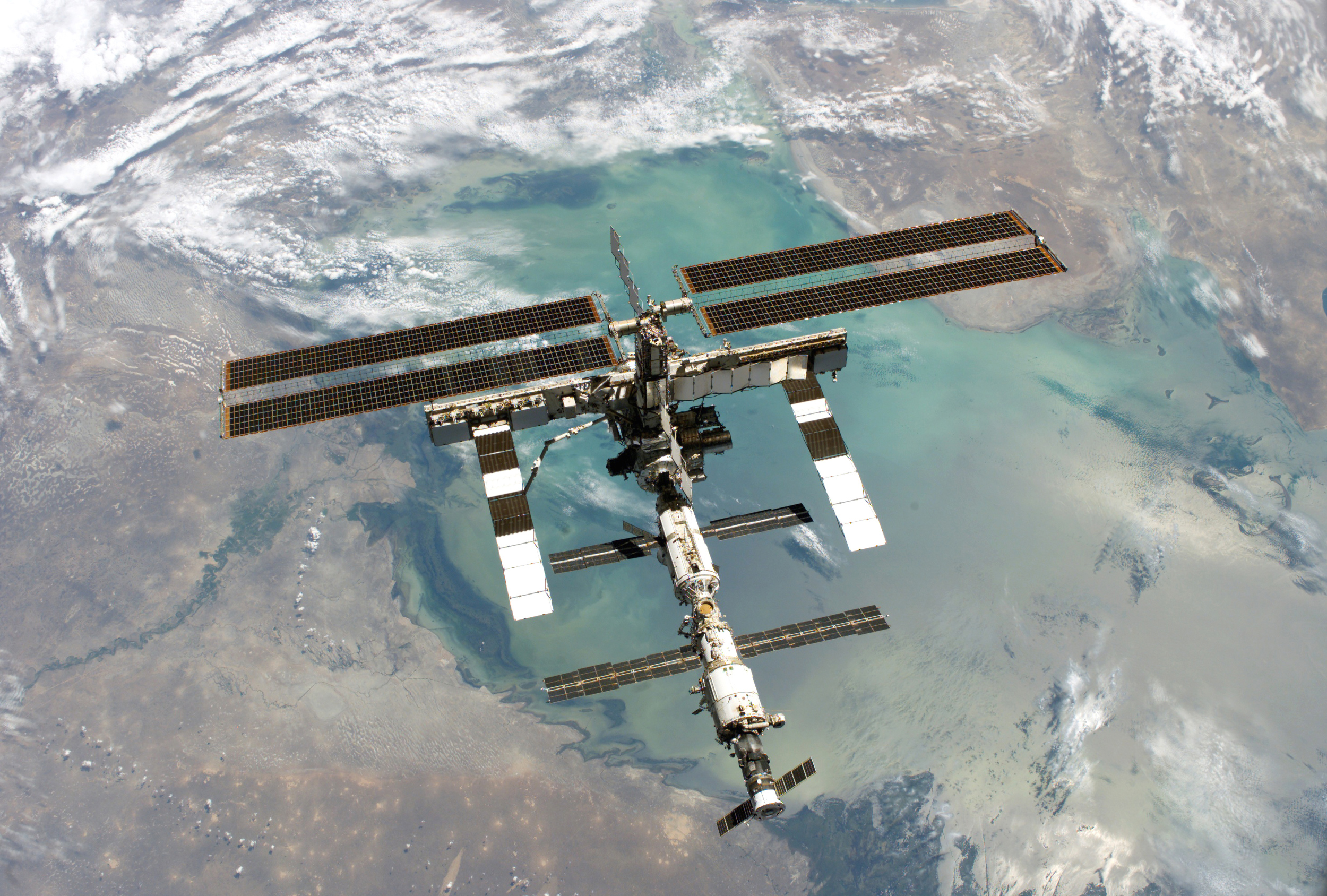
ISS after STS-114 departs
The International Space Station, only about a third completed, is seen by space shuttle Discovery in 2005 as it departs from the outpost. Photo Credit: NASA
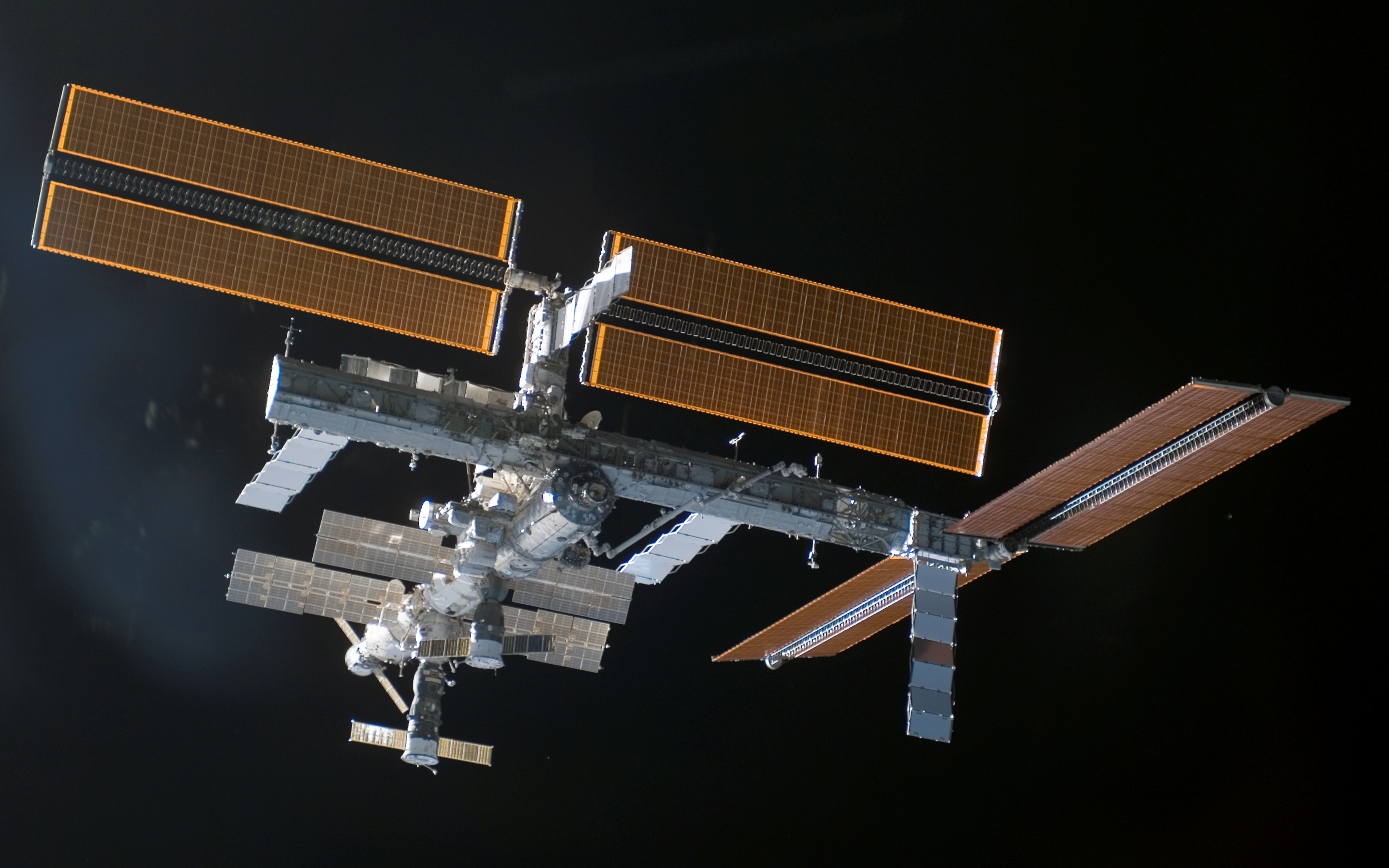
P3/P4 Truss
In September 2006, Atlantis brings the first big addition to the outpost since the tragedy of STS-107. The P3/P4 Truss doubles the power capacity of the ISS. Photo Credit: NASA

P5 Truss
The P5 Truss was attached to the end of P3/P4 in December 2006 to allow for P6 to be placed there, about a year later. Photo Credit: NASA
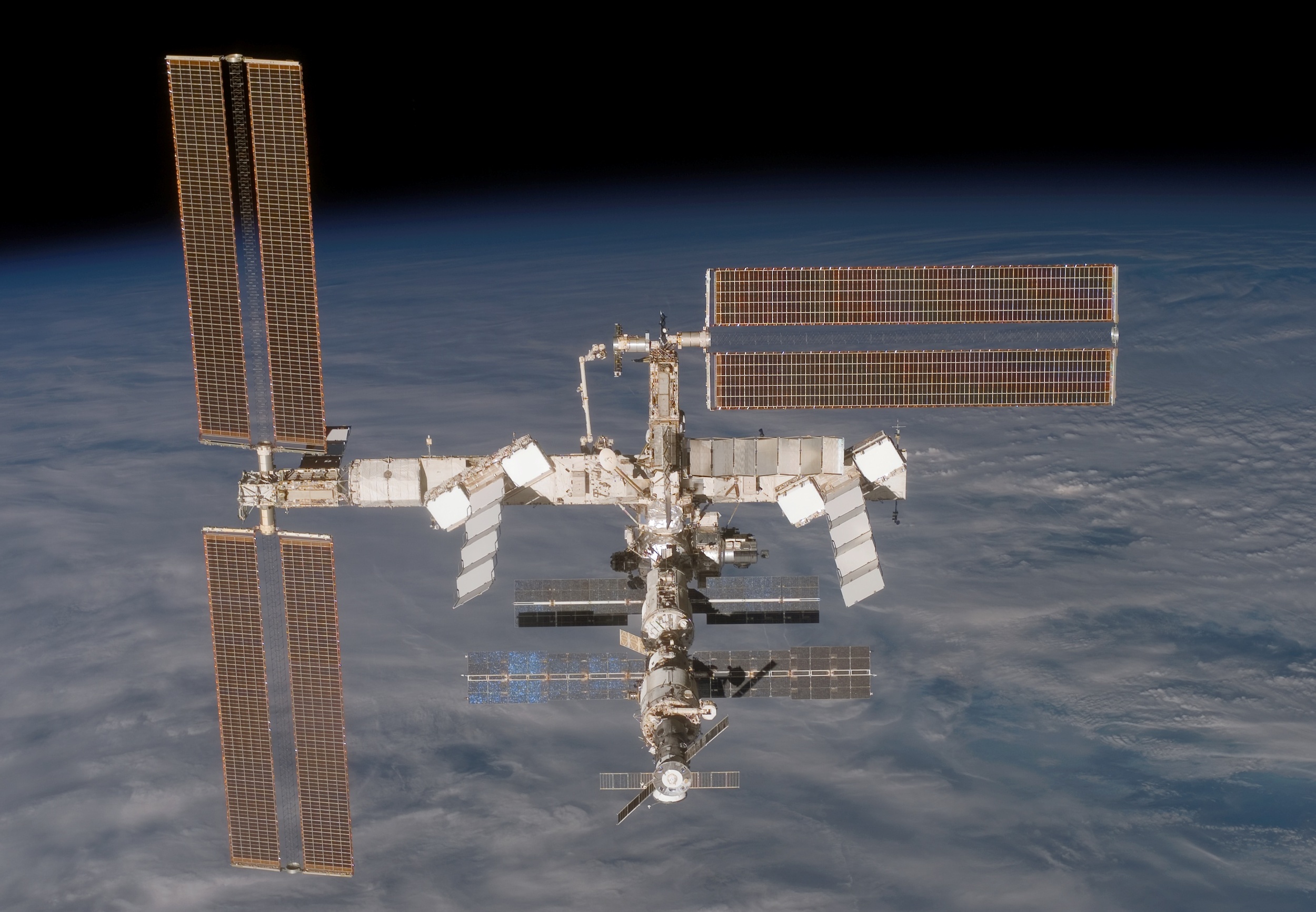
P5 Truss attached
The view from Discovery as it departs the ISS in December 2006. Photo Credit: NASA
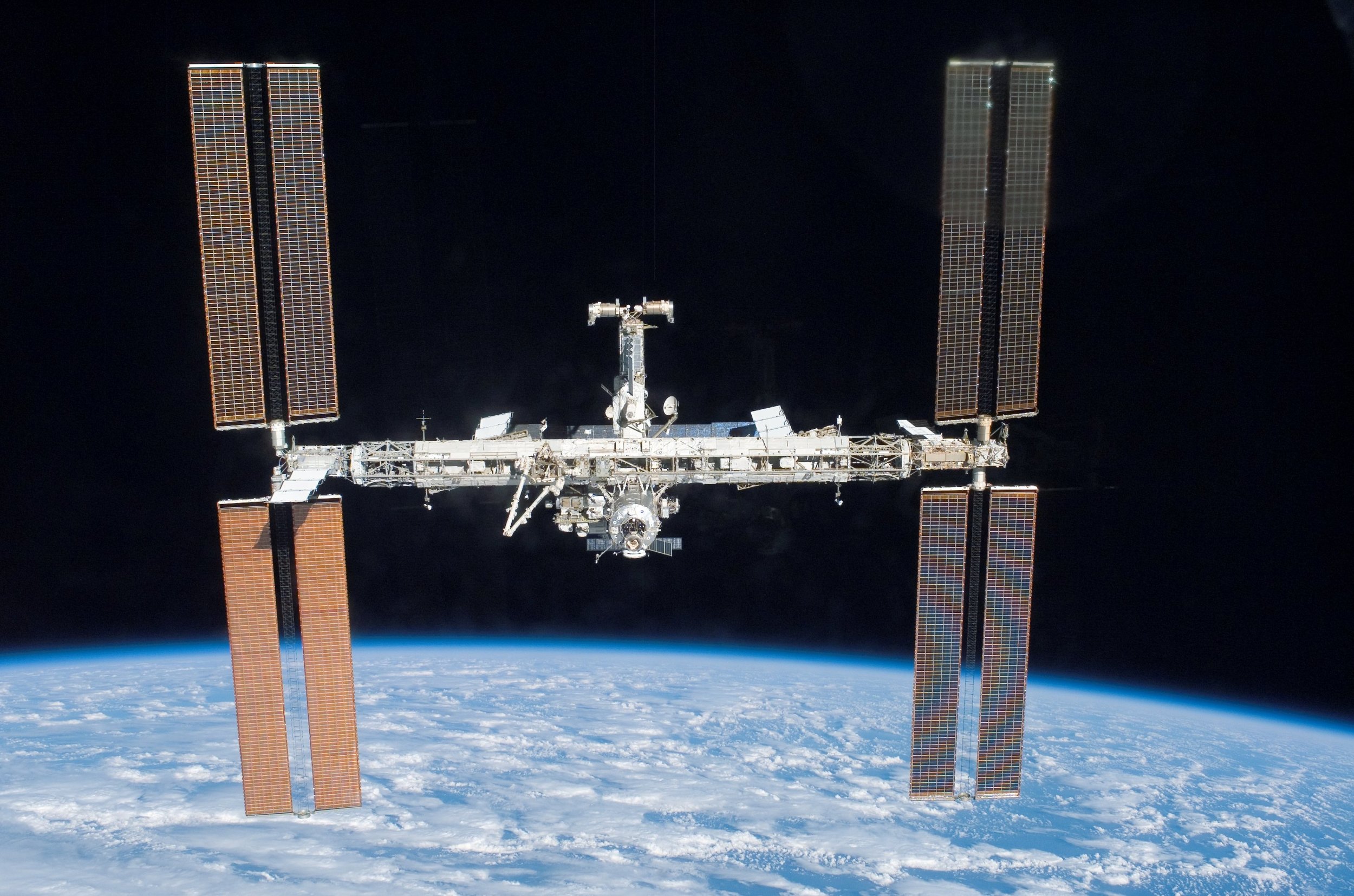
S3/S4 Truss
In June 2007, Atlantis brings the S3/S4 Truss. The arrays from P6 are completely folded up to allow for full rotation by the Solar Alpha Rotary Joints located on the P3/P4 and S3/S4 trusses. Photo Credit: NASA
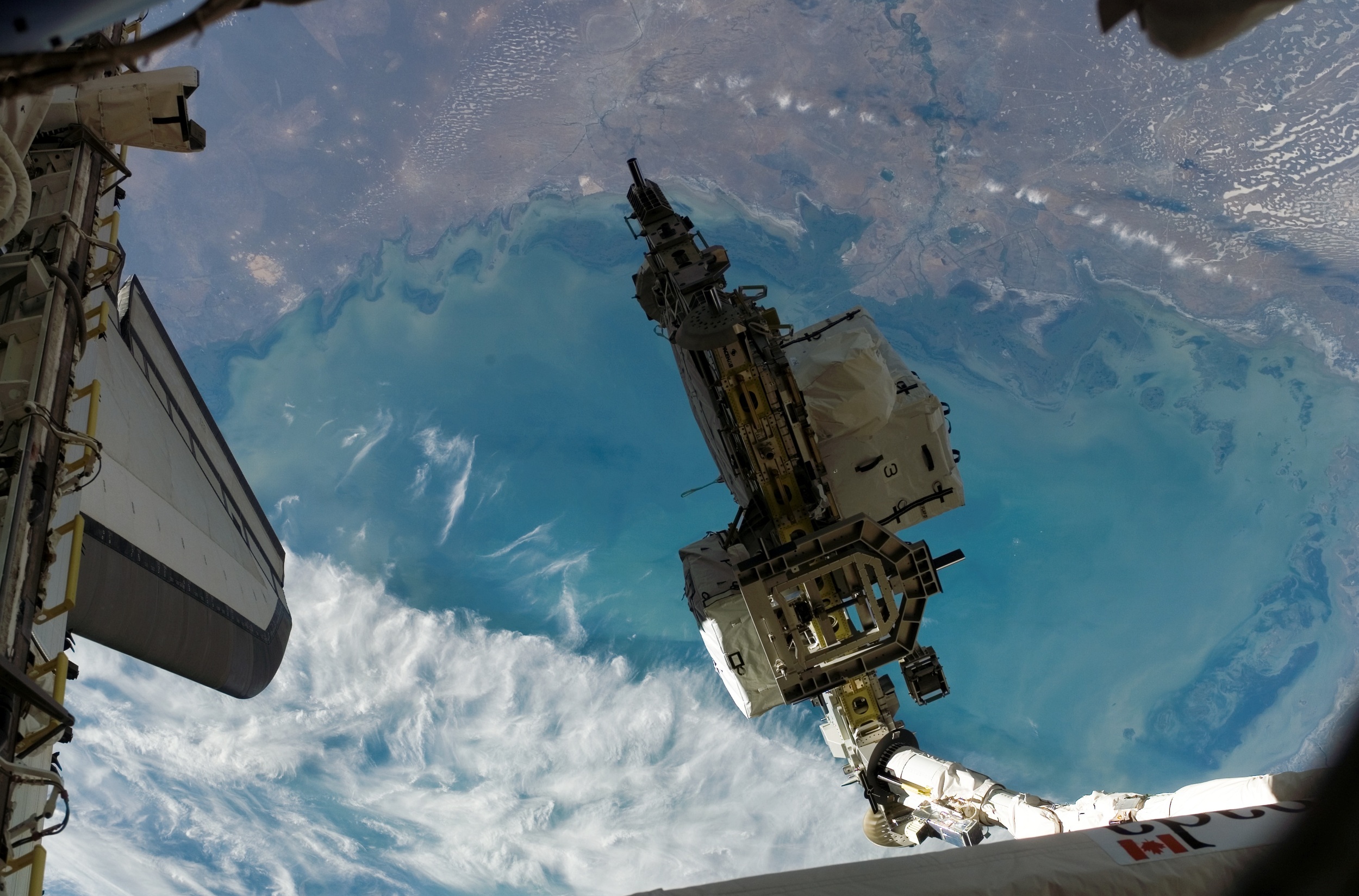
ESP-3 delivered
Endeavour brings the ESP-3 platform as well as the S5 Truss on STS-118 in August 2007. Photo Credit: NASA
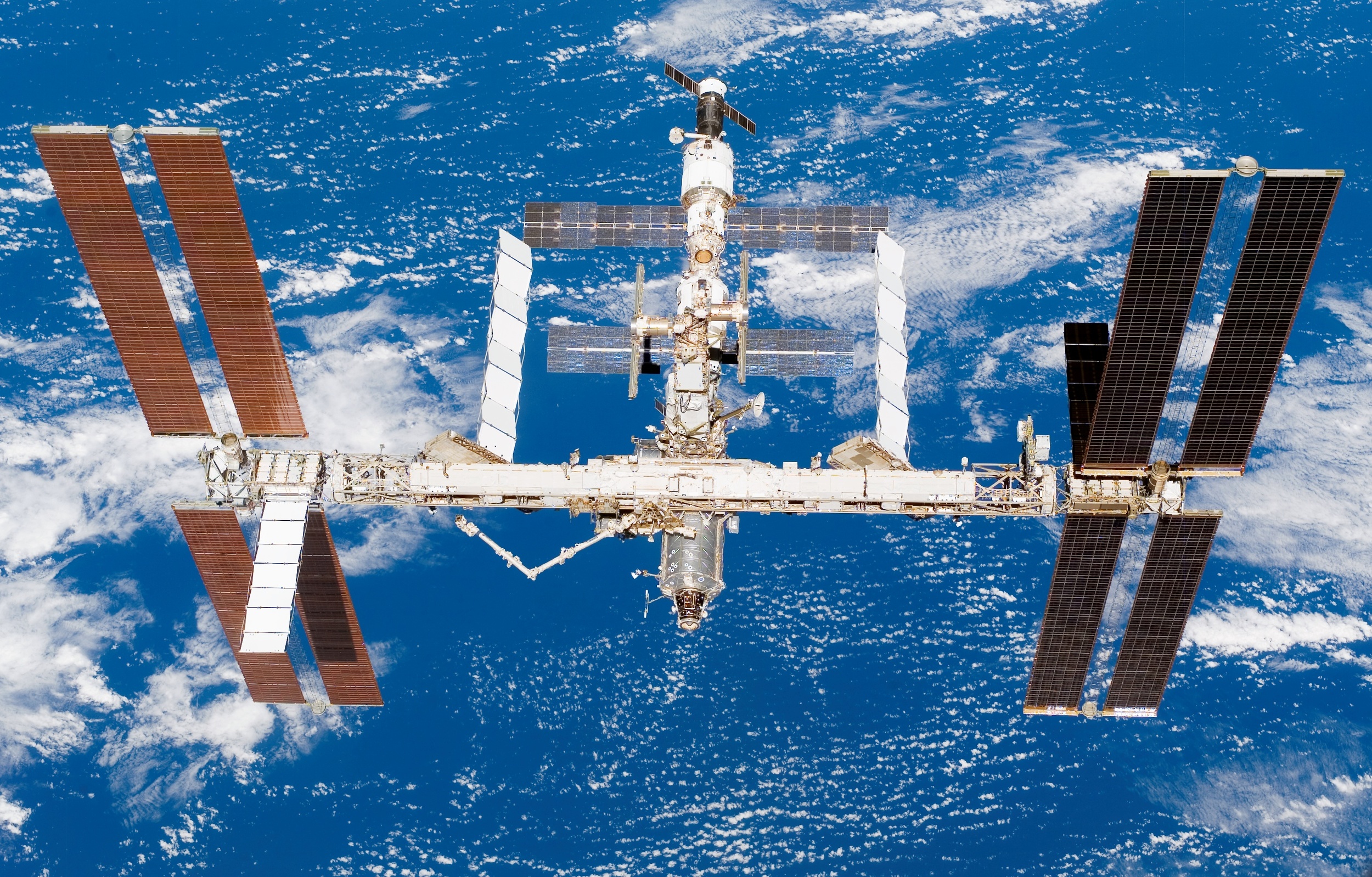
View from STS-118
The P5 Truss, left end of truss, and ESP-3, right end of truss, can be seen by the departing crew of STS-118 in June 2007. Photo Credit: NASA
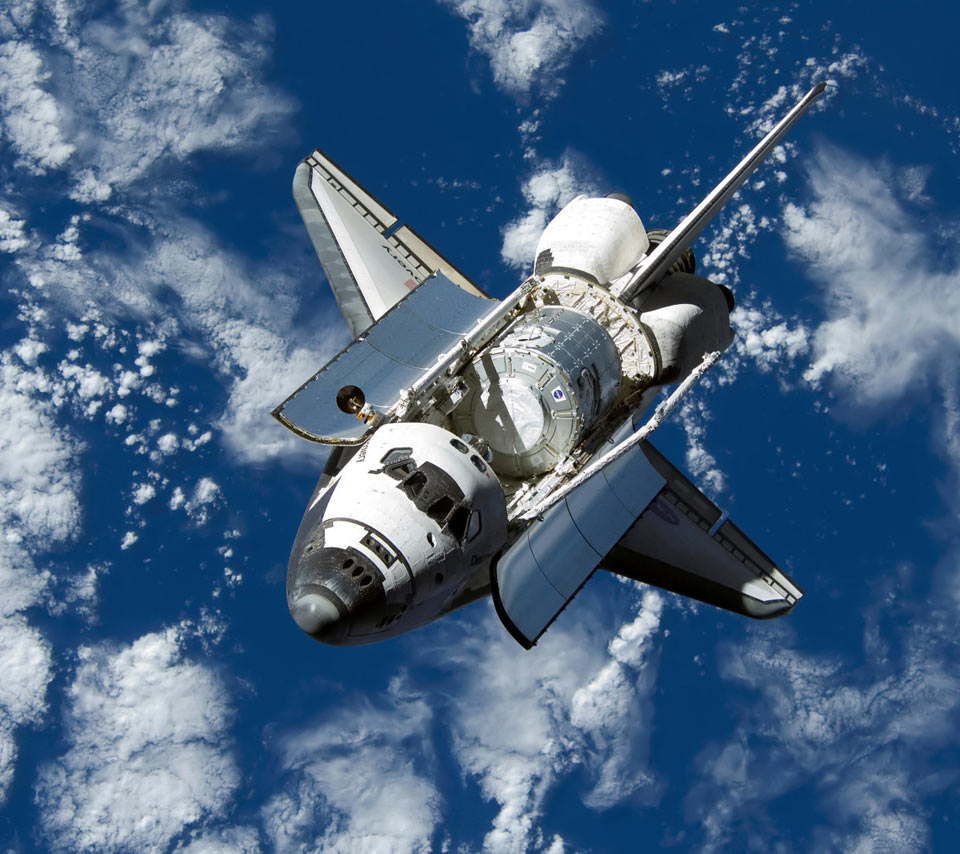
STS-120
Discovery brings the Harmony module to the space station in October 2007. Photo Credit: NASA
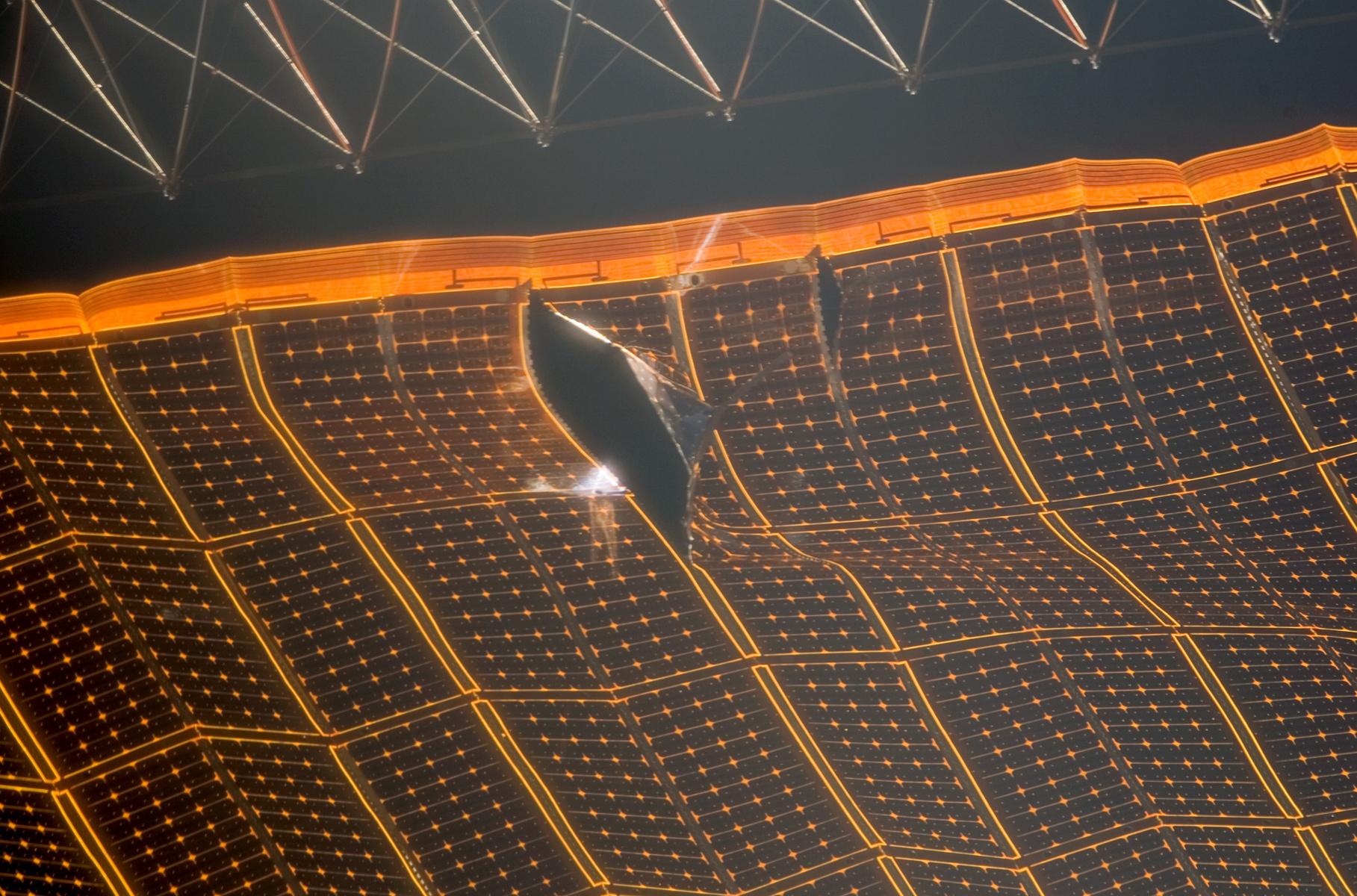
A tear forms
After installing Harmony in, the STS-120 crew was tasked with relocating the P6 truss from the Z1 Truss to the far port side of the Integrated Truss Structure. While unfurling the Solar Array Wings, a tear formed on the 4B array. Photo Credit: NASA
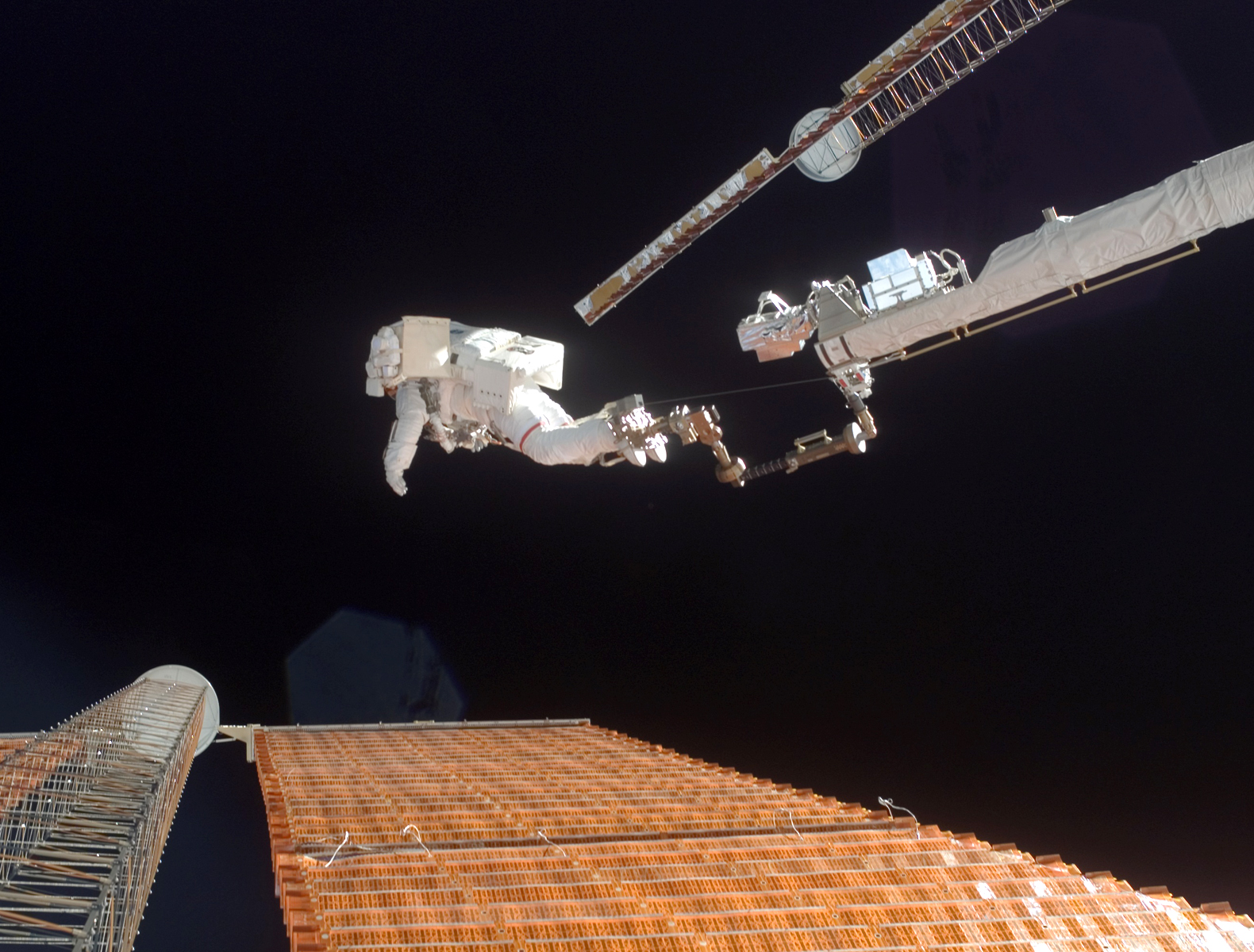
Emergency repair
To fix the tear in the 4B array, astronaut Scott Parazynski went on an Extravehicular Activity. He was placed at the end of the Orbiter Boom Sensor System, which was grappled by the Canadarm2. It took the entire length of both to get him over to the work site. He effectively "tied" off the torn section. Photo Credit: NASA
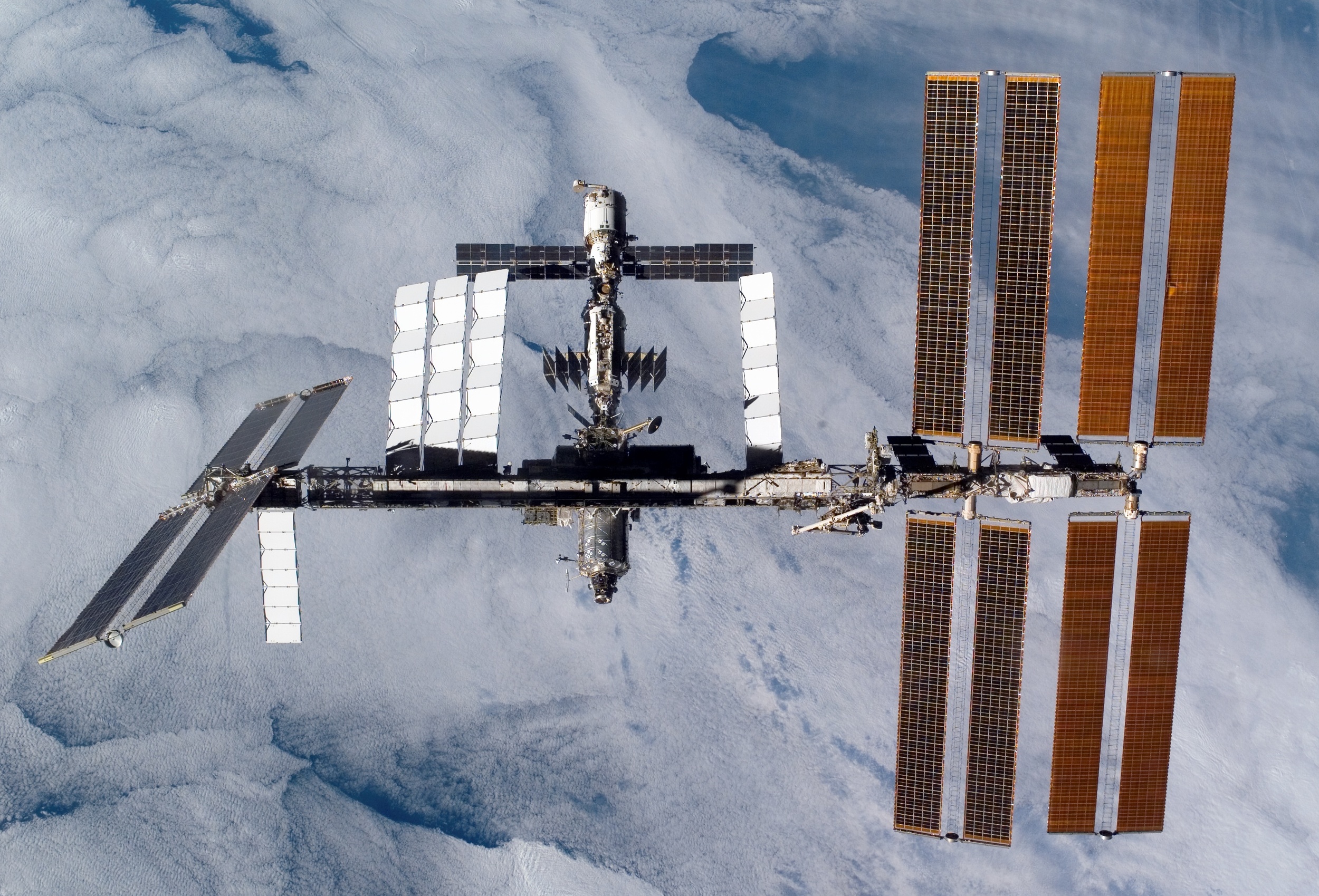
Post STS-120
The view of the growing ISS after STS-120 leaves in November 2007. Photo Credit: NASA

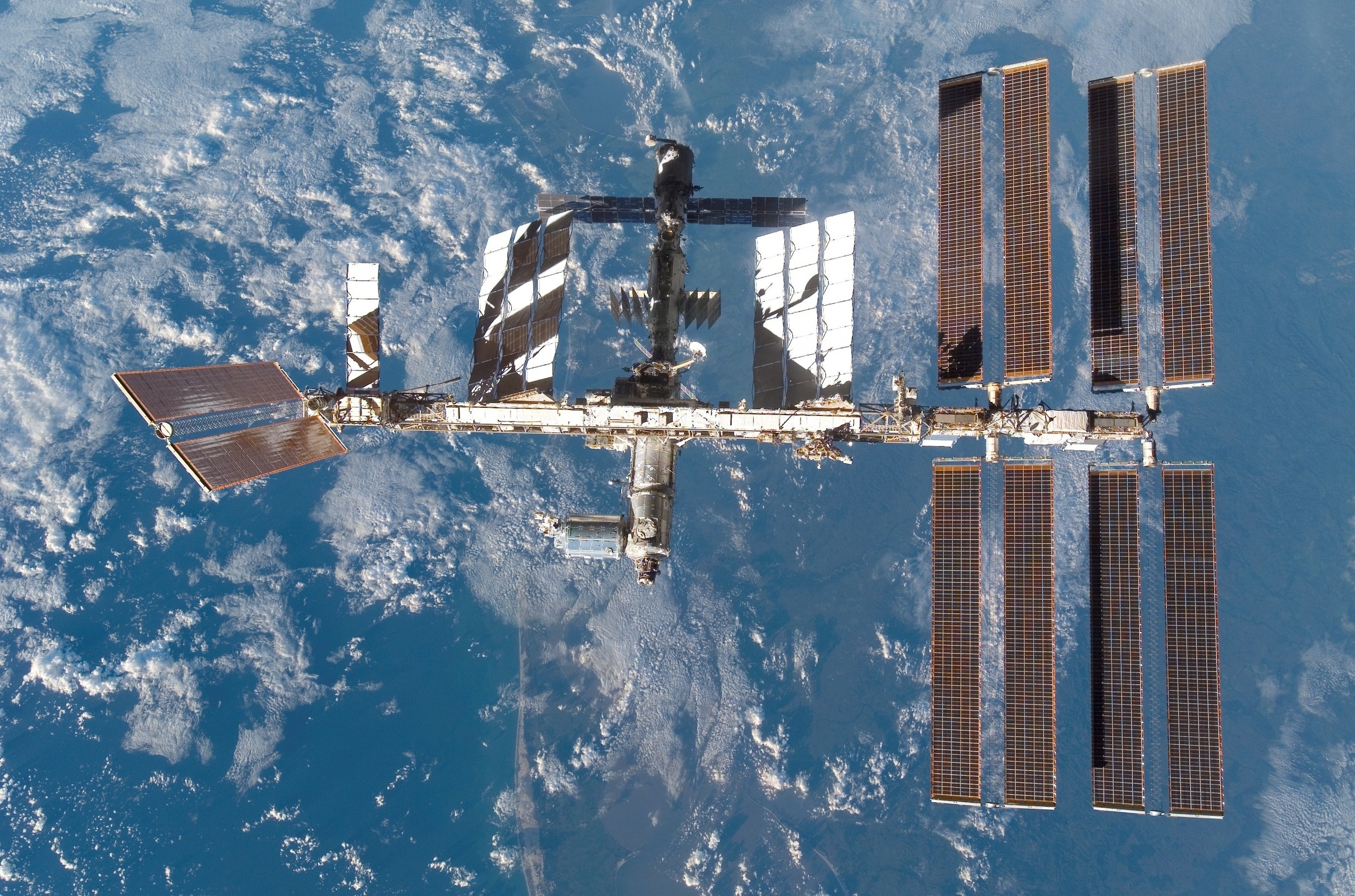
Columbus laboratory
In February 2008, the first international partner laboratory was attached to the outpost. Photo Credit: NASA

Dextre
In March 2008, the station was given a robotic "hand" by Endeavour. Additionally, the Japanese Logistics Module was delivered in a temporary location. Photo Credit: NASA
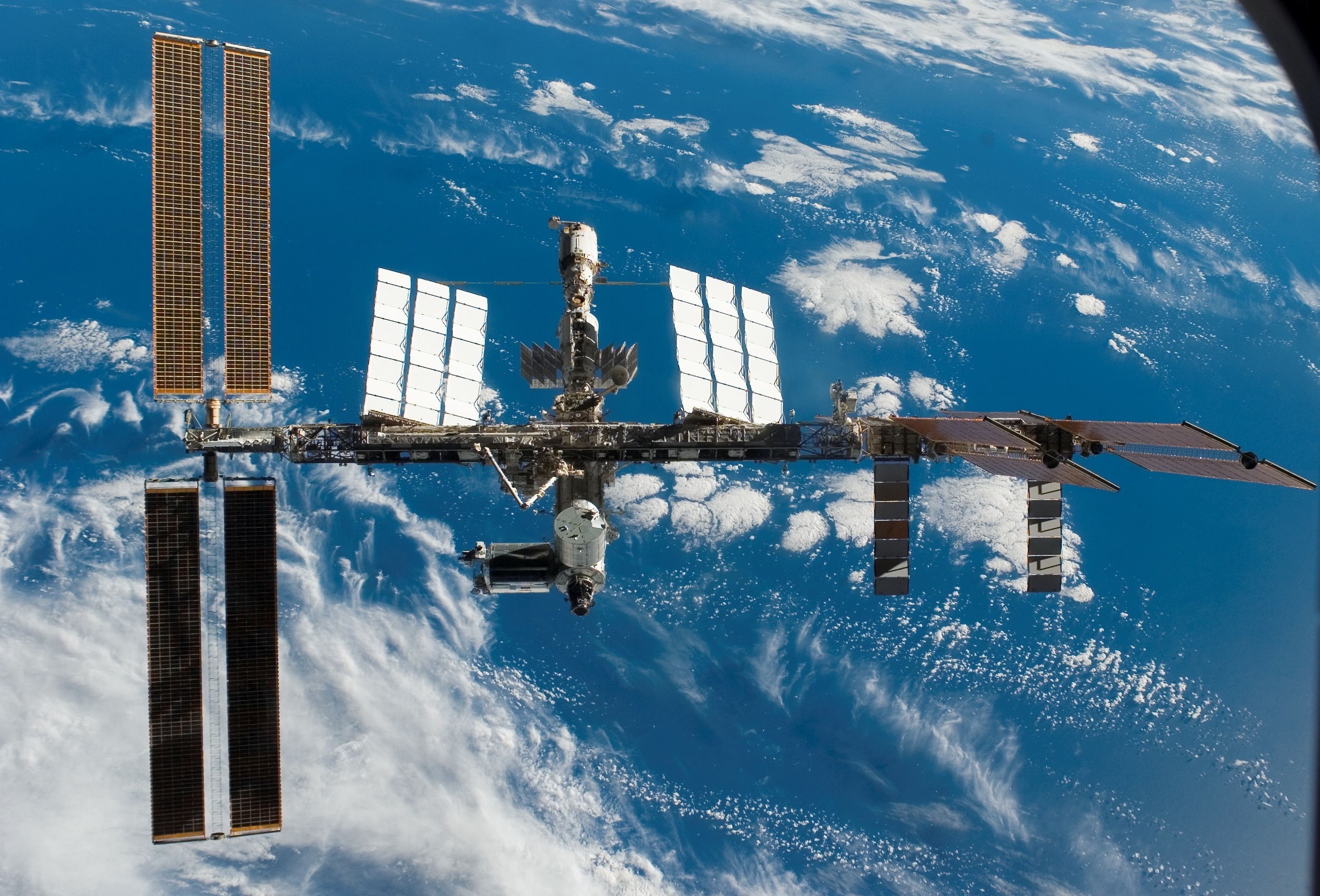
Japanese logistics
Along with Dextre, the Japanese Logistics Module was attached on the zenith port of Harmony. Photo Credit: NASA
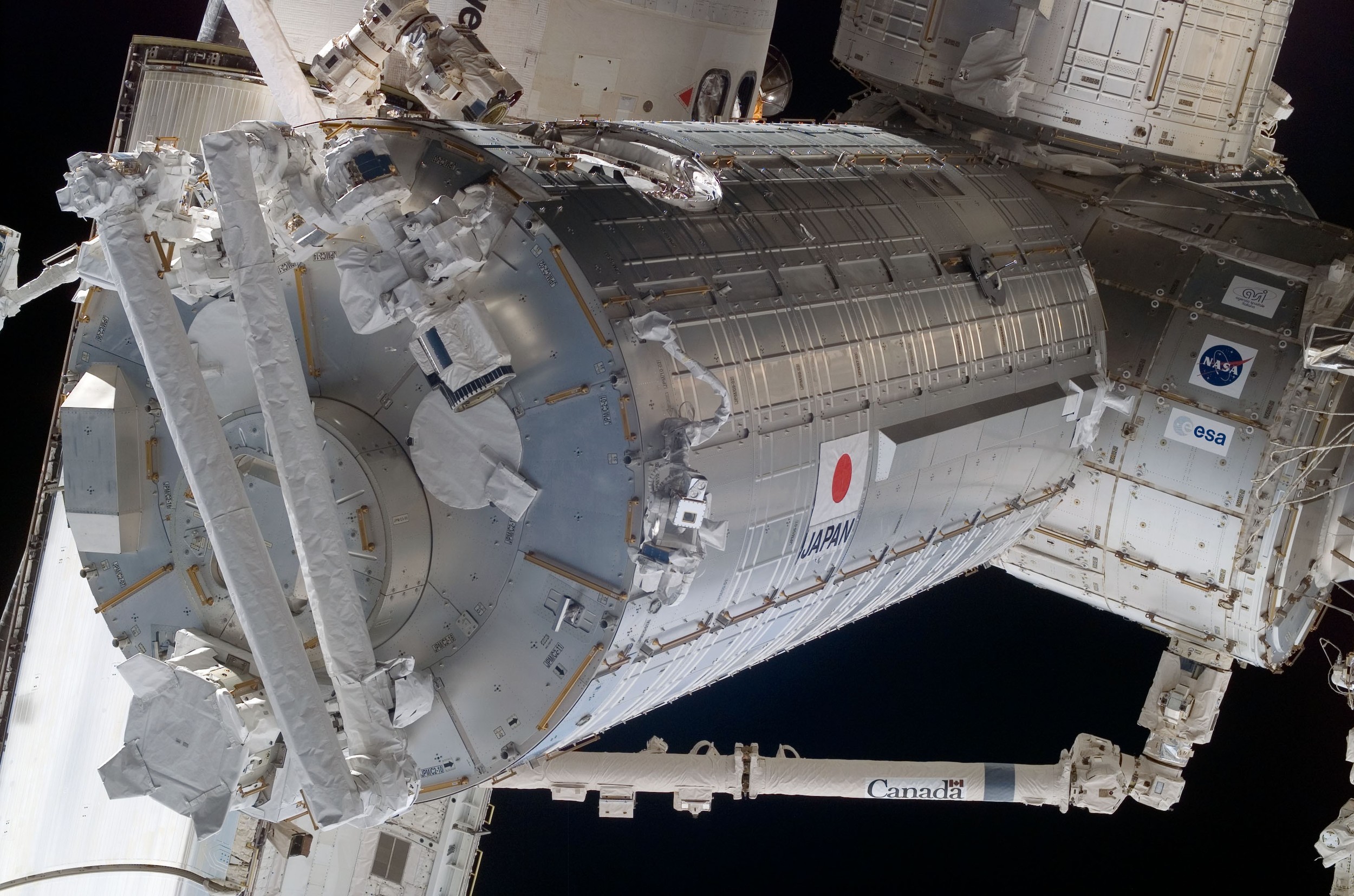
Kibo
The Japanese laboratory, Kibo, arrived at the space station in May 2009. Photo Credit: NASA
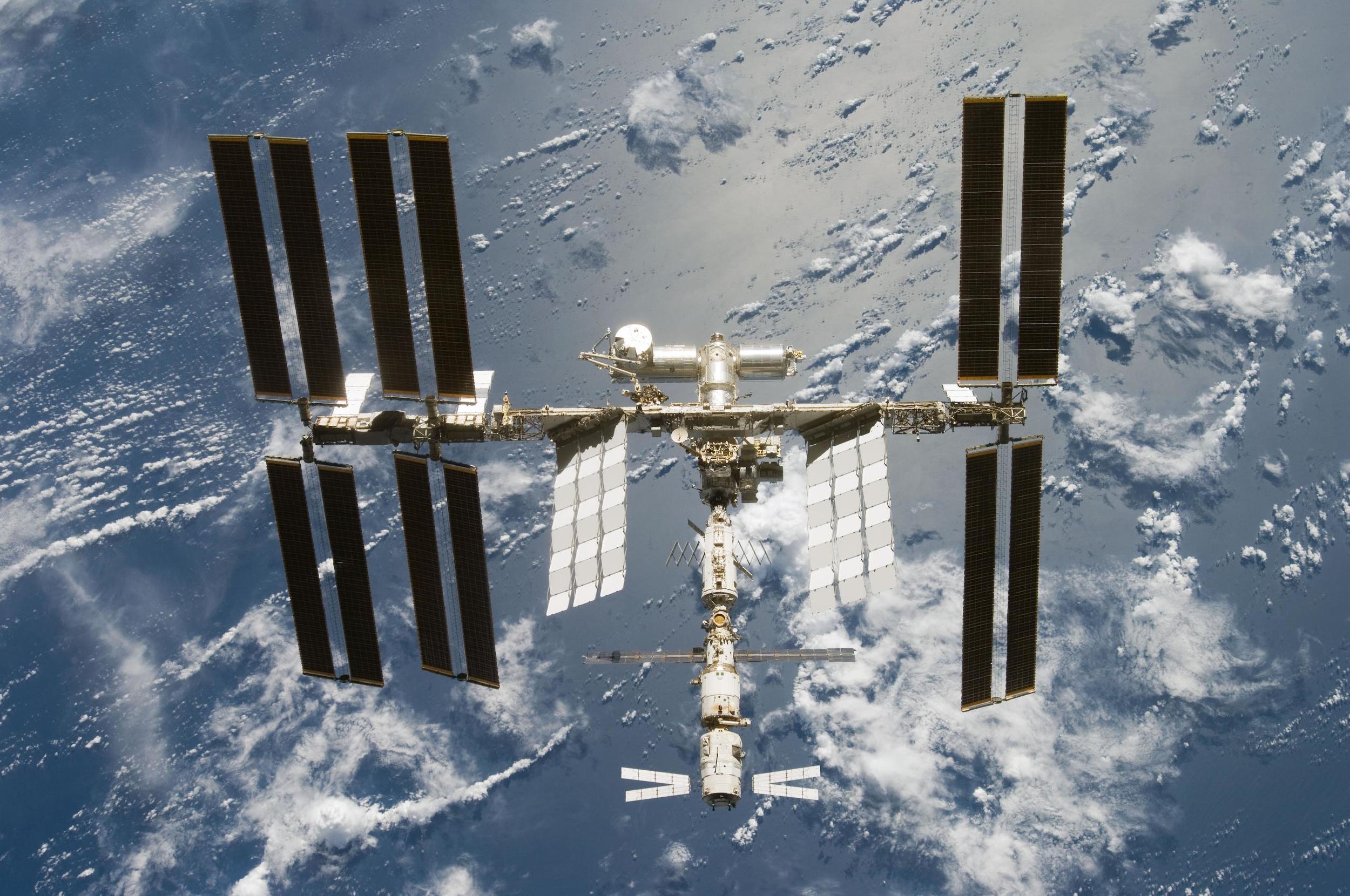
International labs
All three U.S. Orbital Segment labs are seen together for the first time in May 2008. Photo Credit: NASA
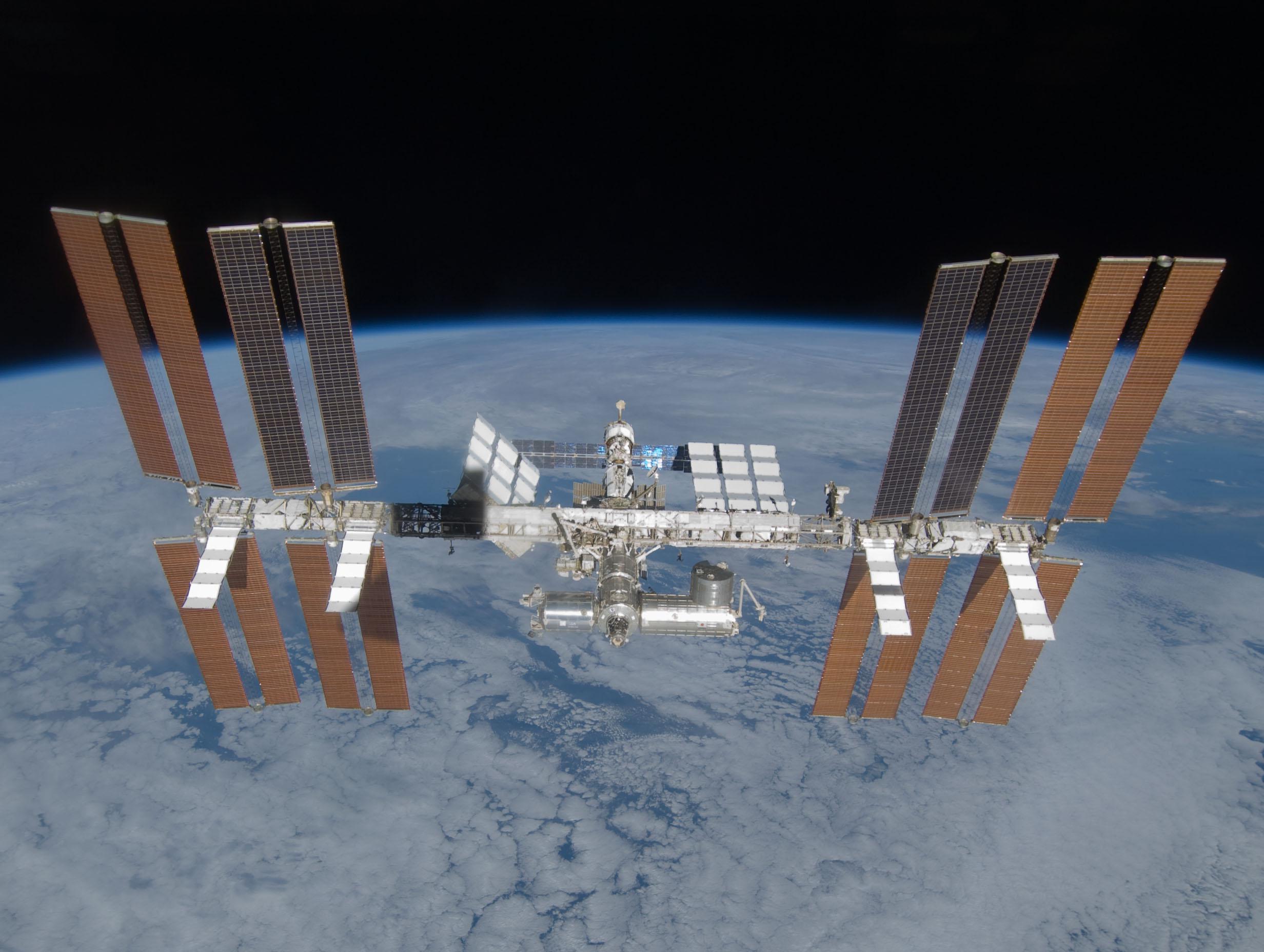
S6 Truss
The last set of Solar Array Wings was delivered to ISS in March 2009. This completed the Integrated Truss Structure. Photo Credit: NASA
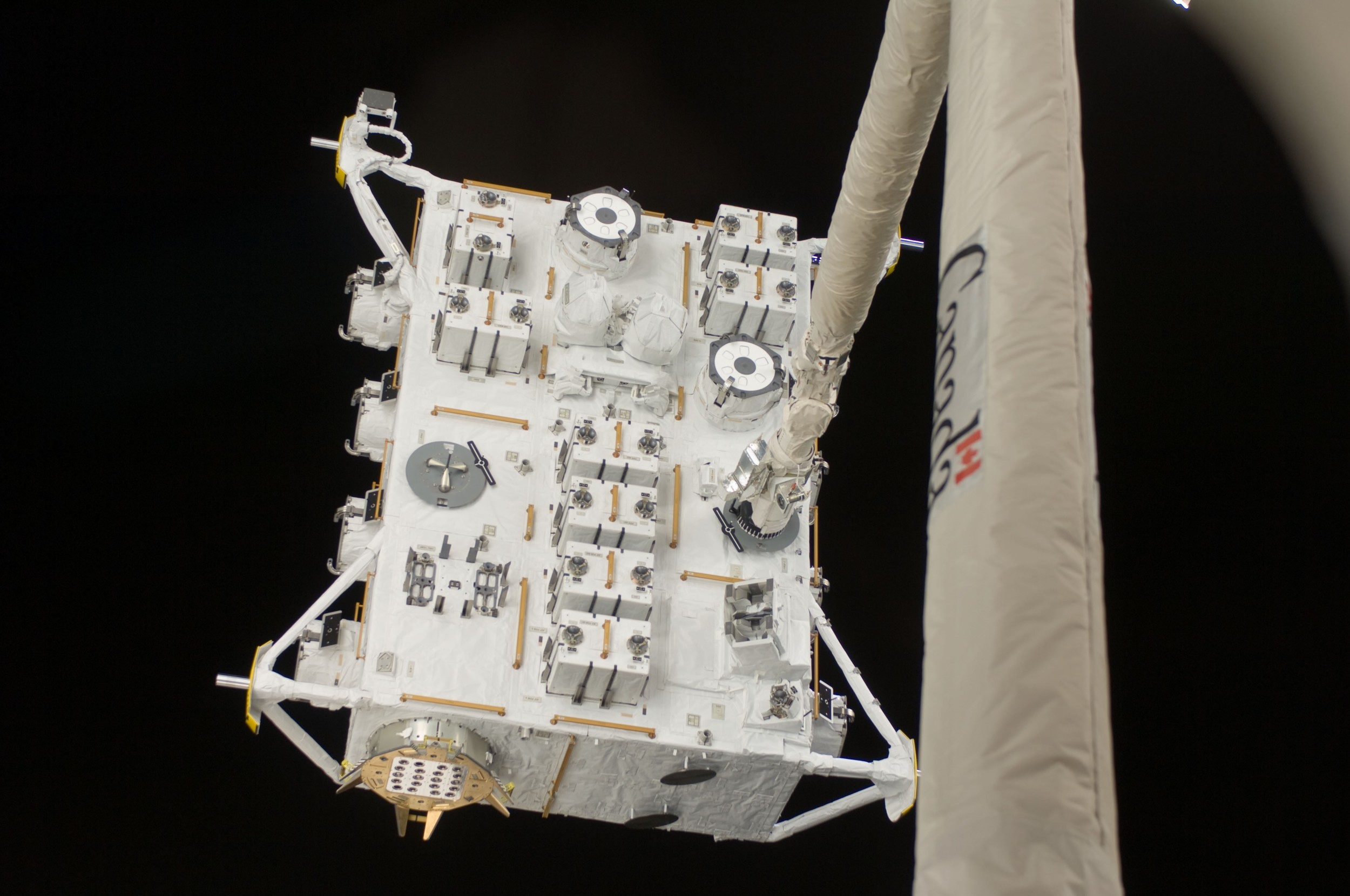
Kibo exposed
The final piece of the Japanese laboratory complex is brought to ISS in July 2009. Photo Credit: NASA
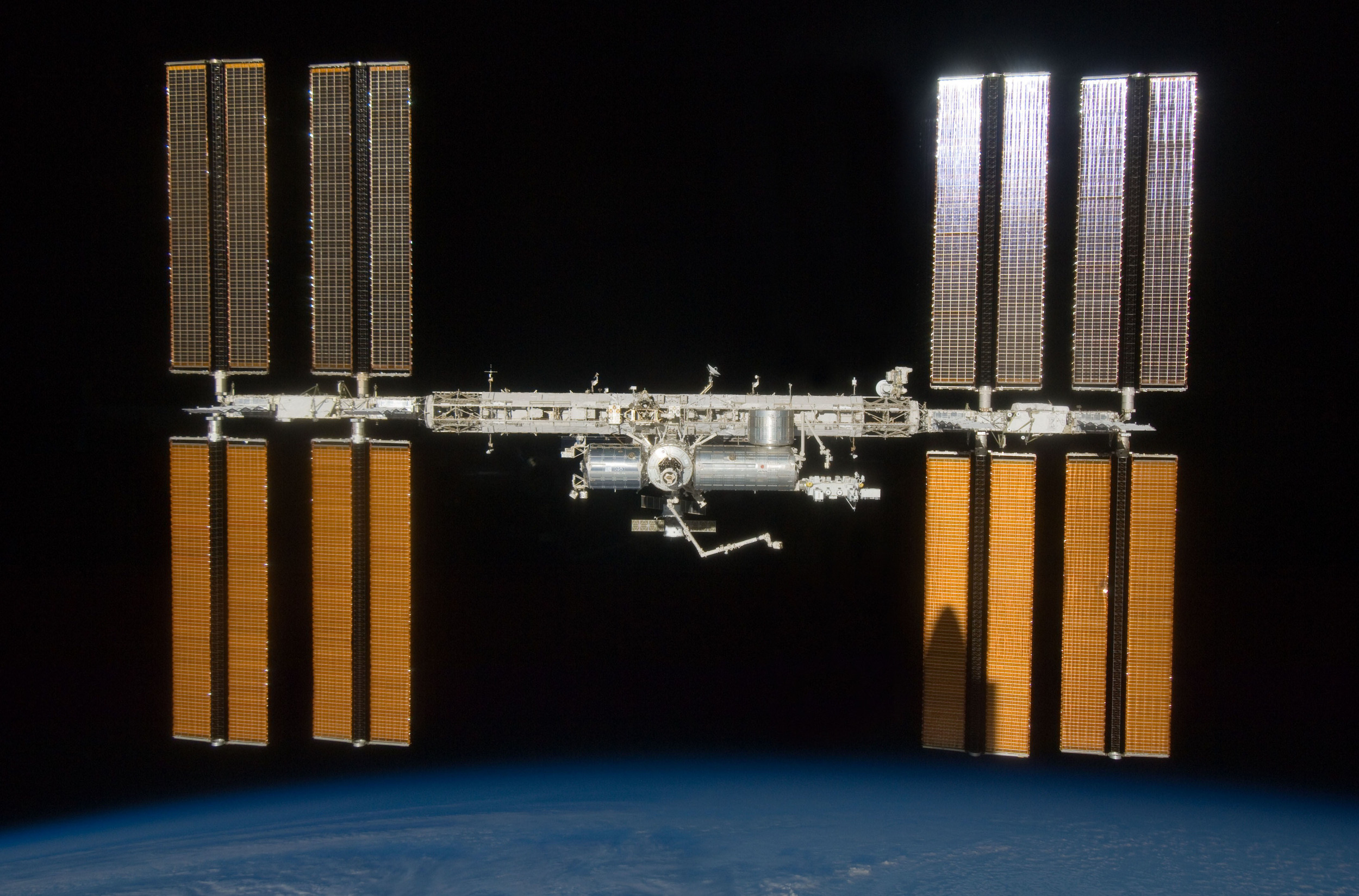
ISS and Kibo flyaround
Space shuttle Endeavour flies around the ISS, inspecting the newly attached Kibo Exposed Facility. Photo Credit: NASA
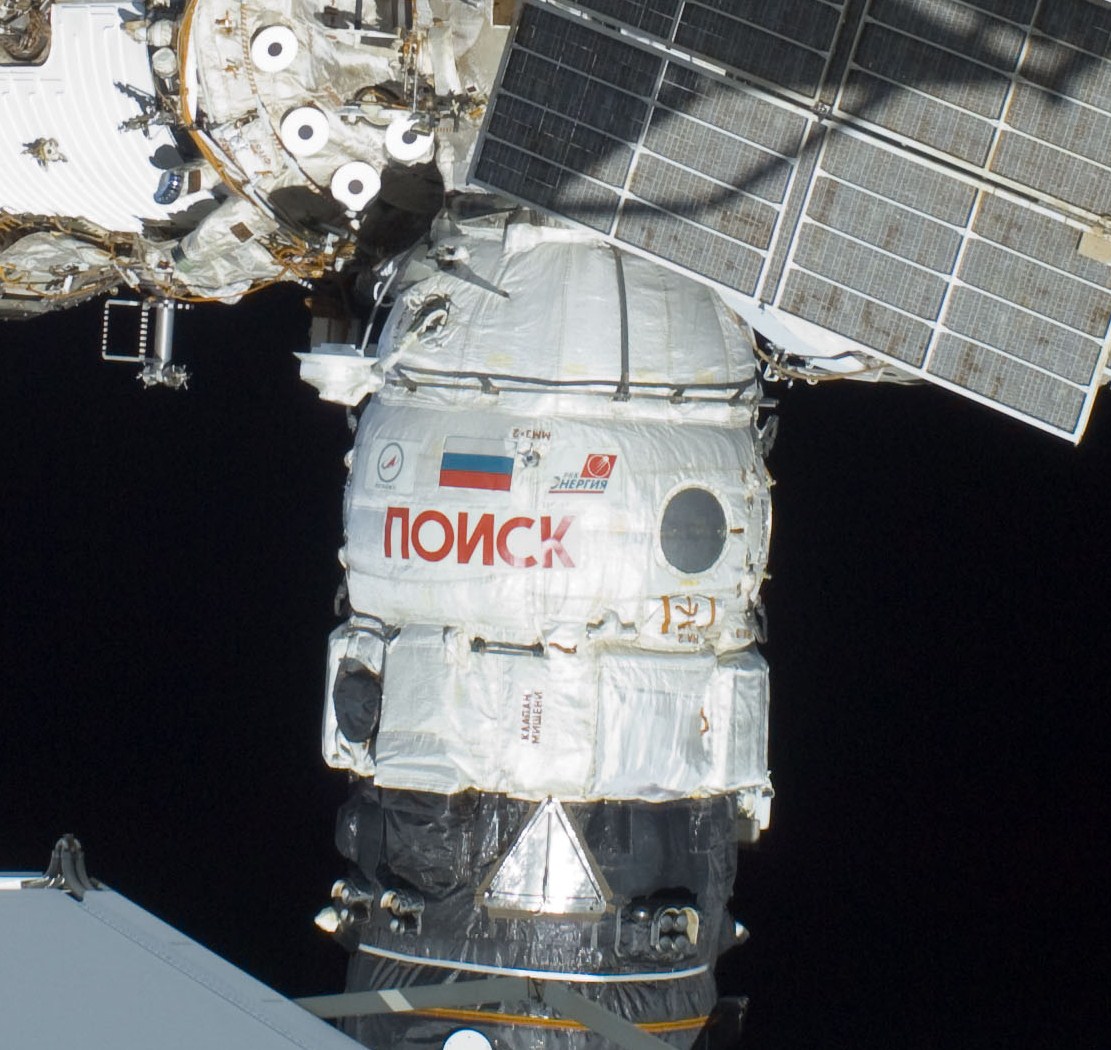
Poisk
A modified Progress brings another docking module, similar to Pirs to the ISS. Photo Credit: NASA
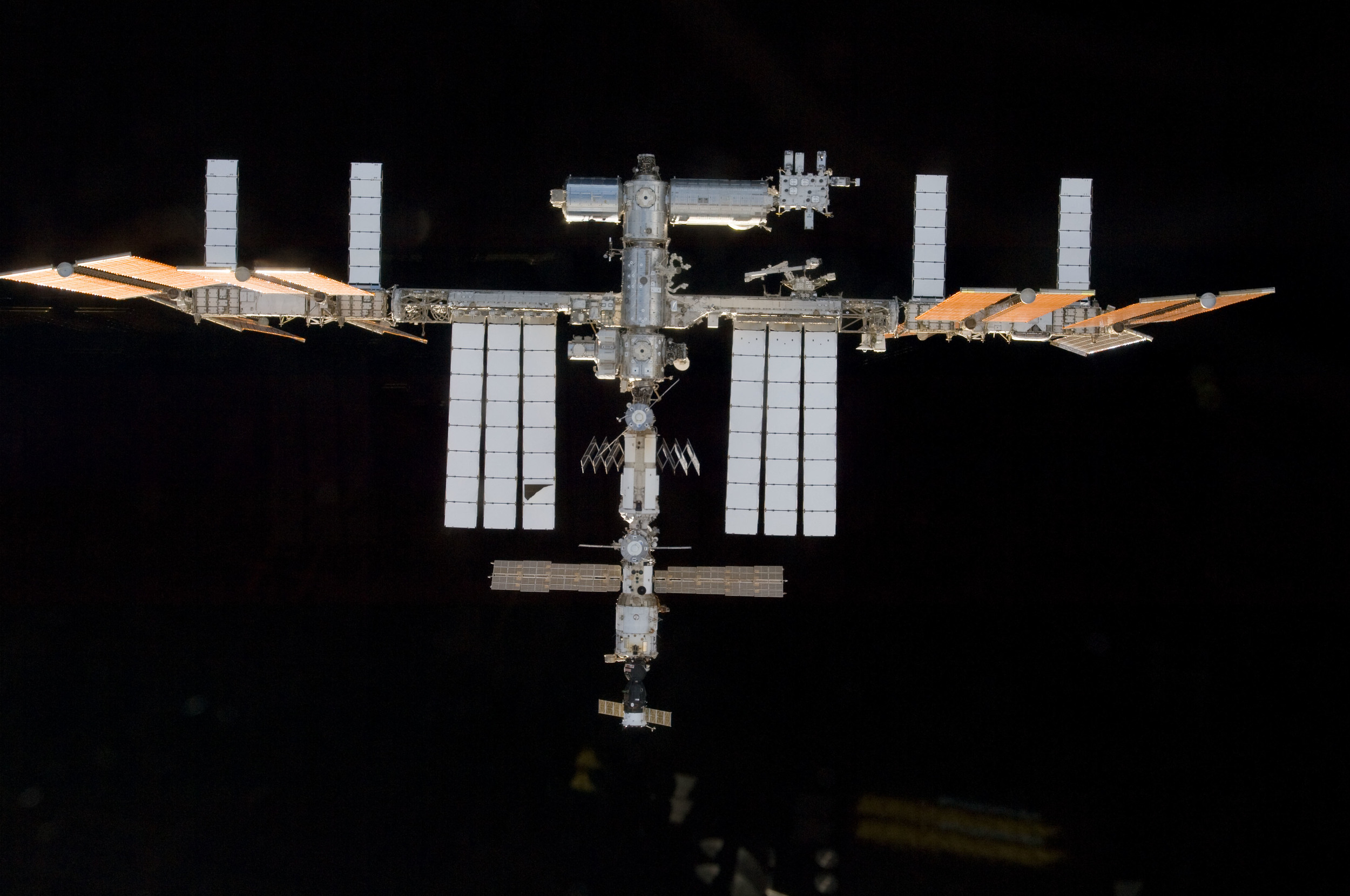
ISS from beneath
The crew of Atlantis view the ISS from beneath it in November 2009. Photo Credit: NASA
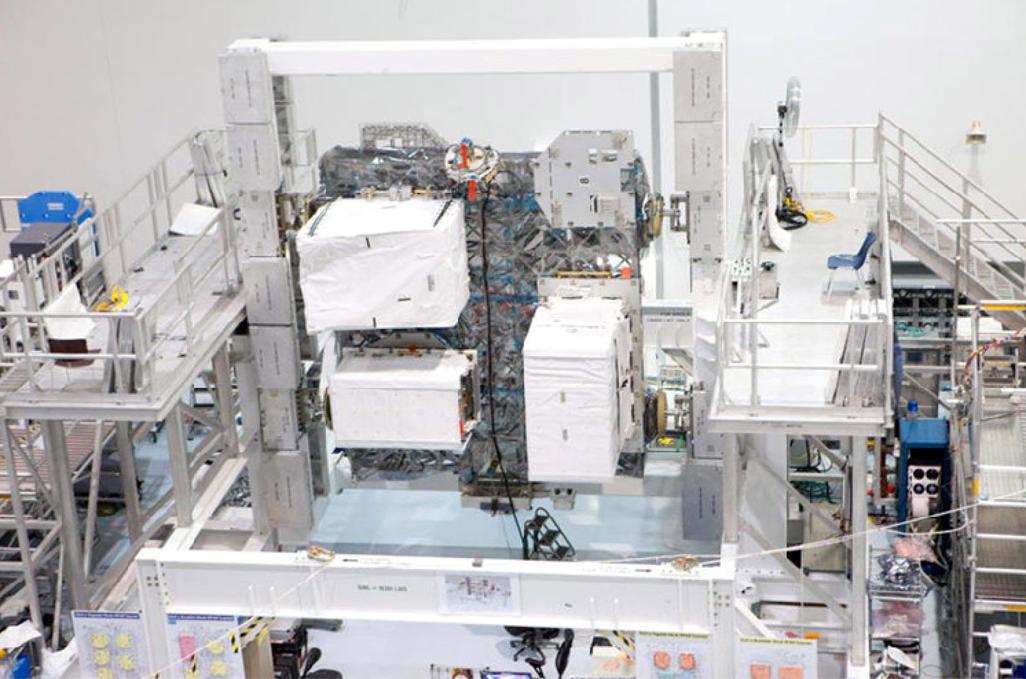
ExPRESS Logistics Carrier 1
ELC-1 is seen in the payload processing center at Kennedy Space Center, Florida. It, with ELC-2, launched to ISS in November 2009. Photo Credit: NASA
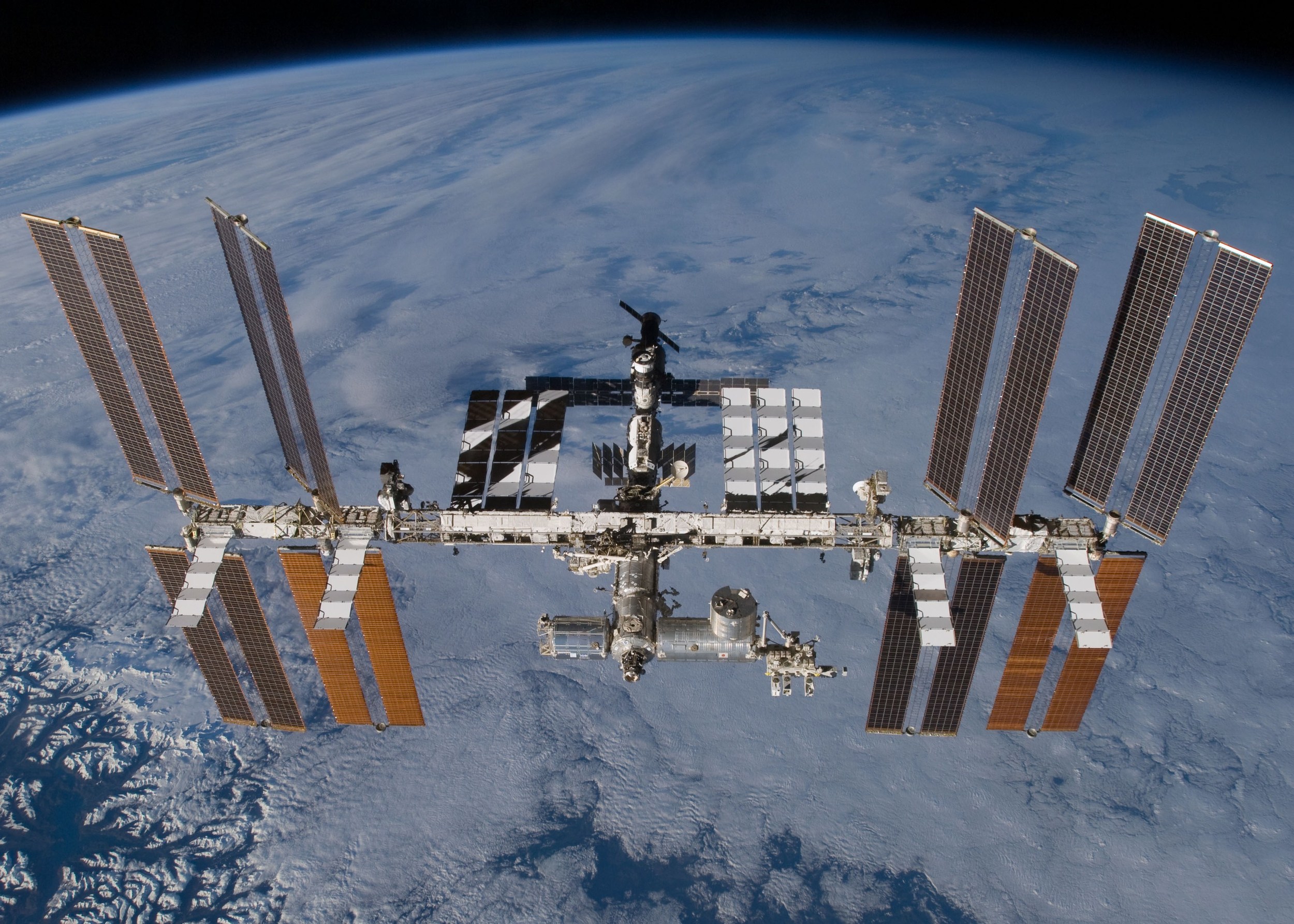
ELC-1 and ELC-2
The ISS with ELC-1 and ELC-2 attached to the Integrated Truss Structure in 2009. Photo Credit: NASA
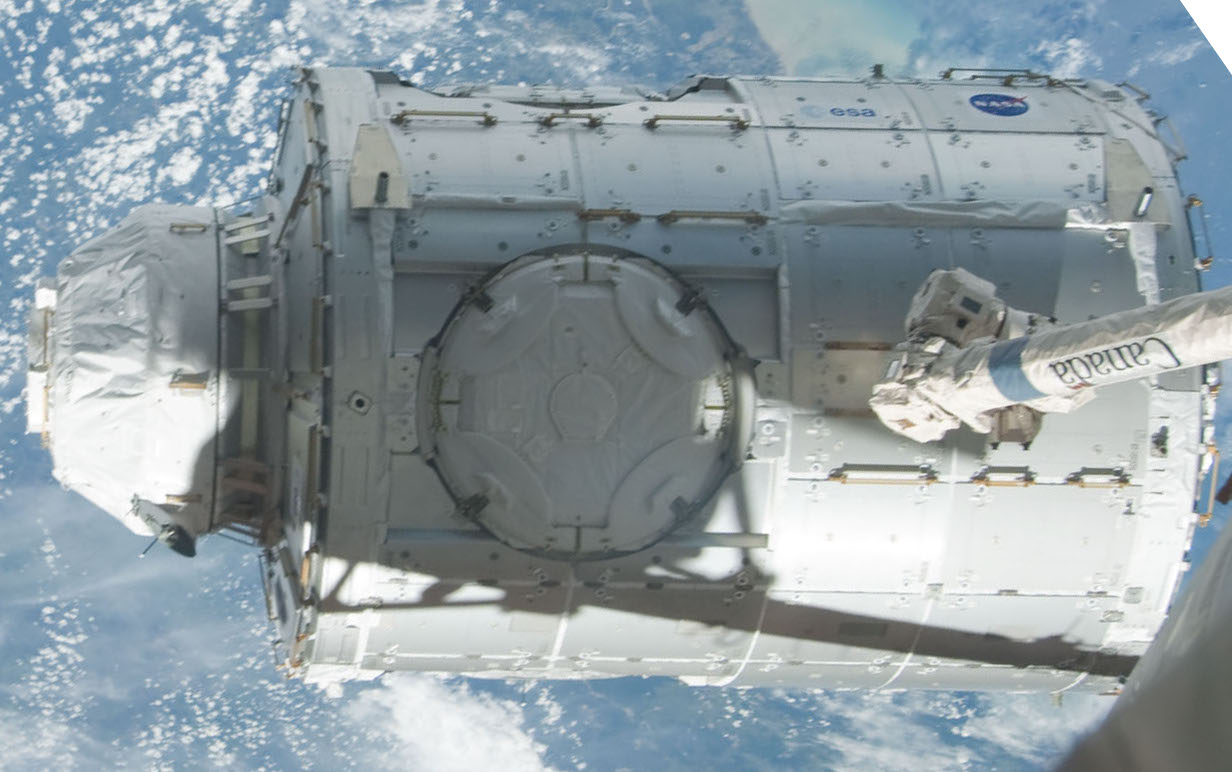
Tranquility
Tranquility, with the Cupola window, is grabbed from the space shuttle's payload bay in February 2010. Photo Credit: NASA
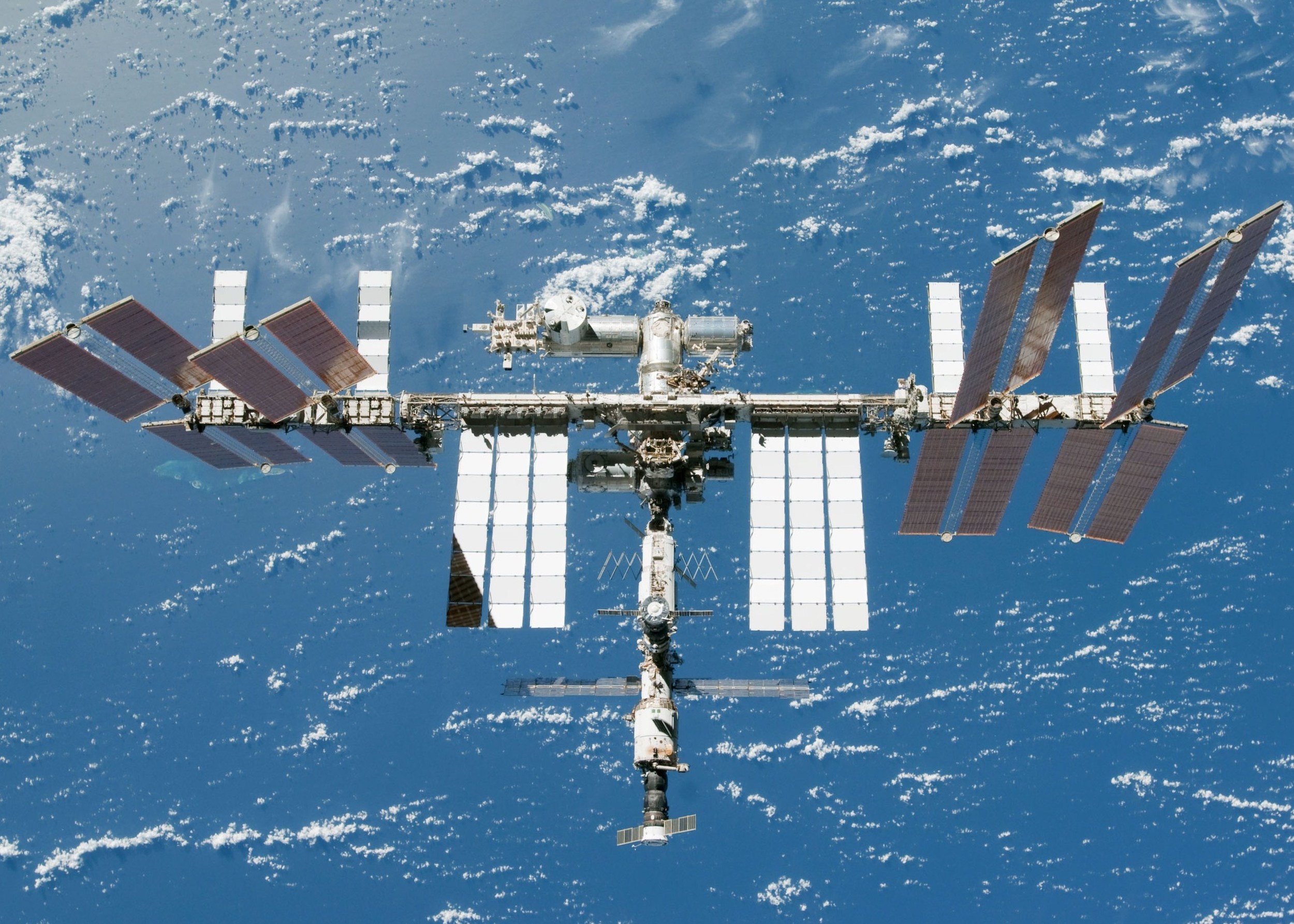
Tranquility on ISS
As Endeavour departs, the newly installed Tranquility module can be seen near the center of the orbital complex. Photo Credit: NASA
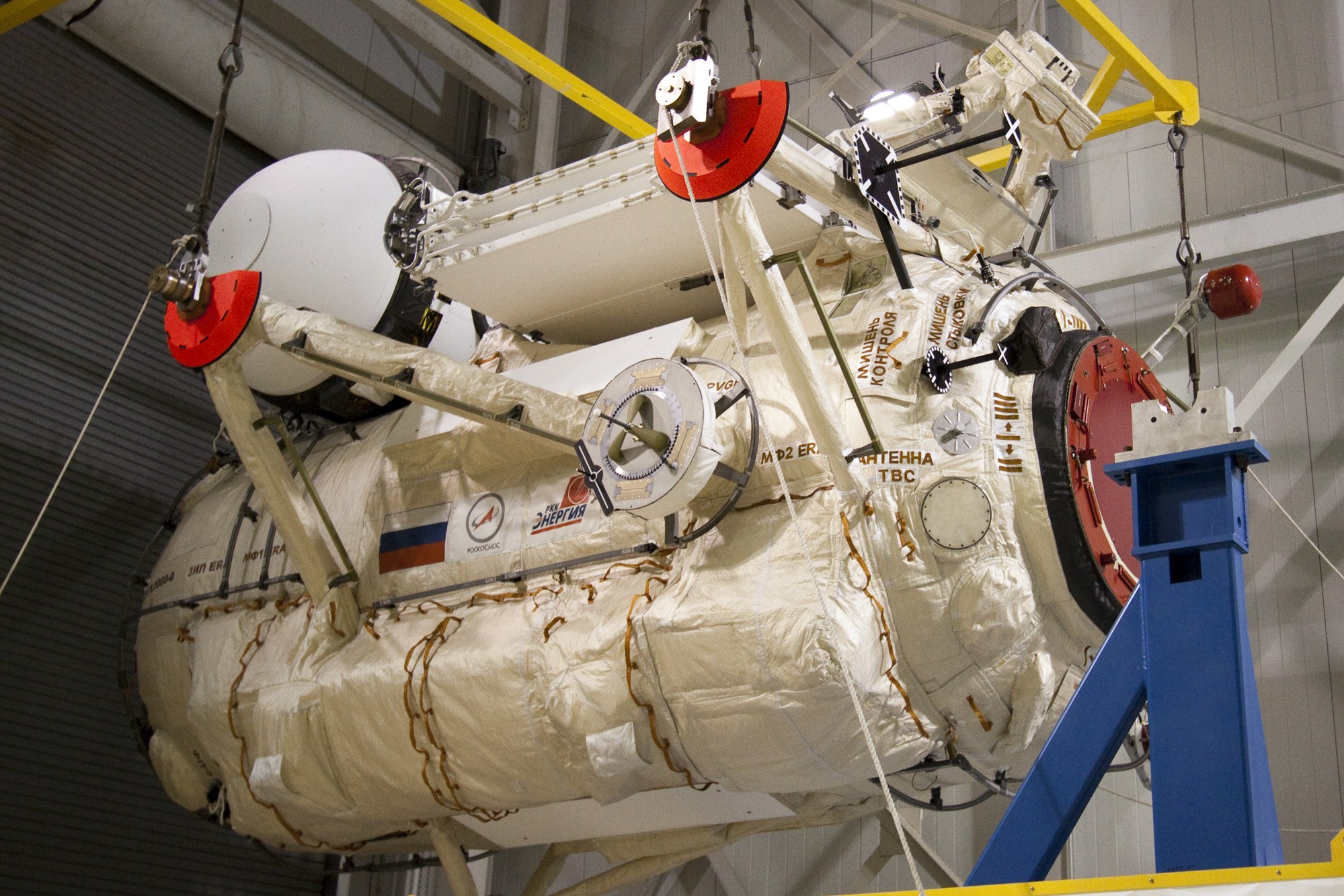
Rassvet
Atlantis brought Rassvet to the outpost in May 2010. It is seen here at the payload processing facility at Kennedy Space Center, Florida. Photo Credit: NASA
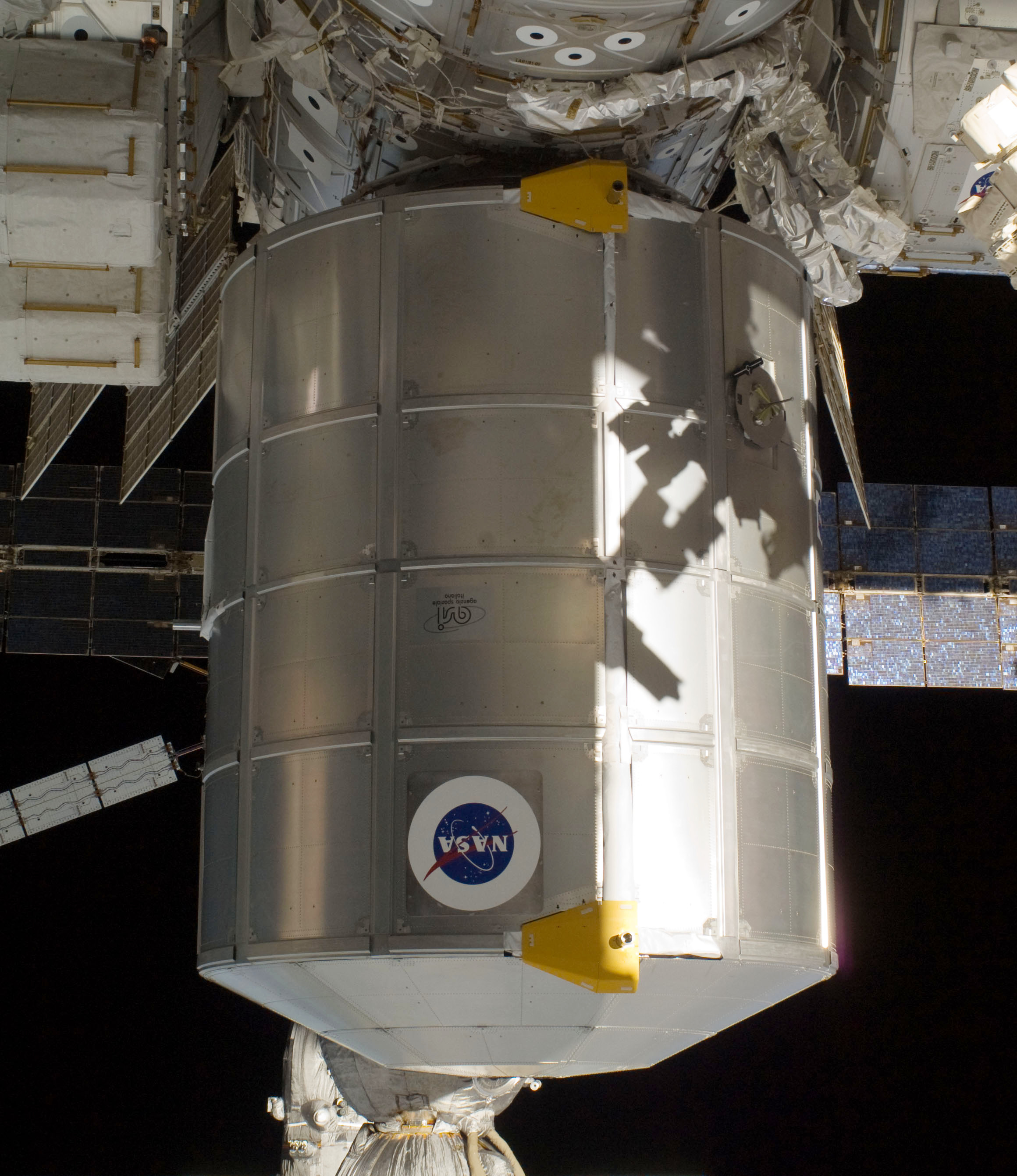
Perminant Multipurpose Module
The PMM, a re-purposed Multipurpose Logistics Module, was originally installed on the Earth-facing port of Unity. It would be relocated to the forward port of Tranquility in 2015. Photo Credit: NASA
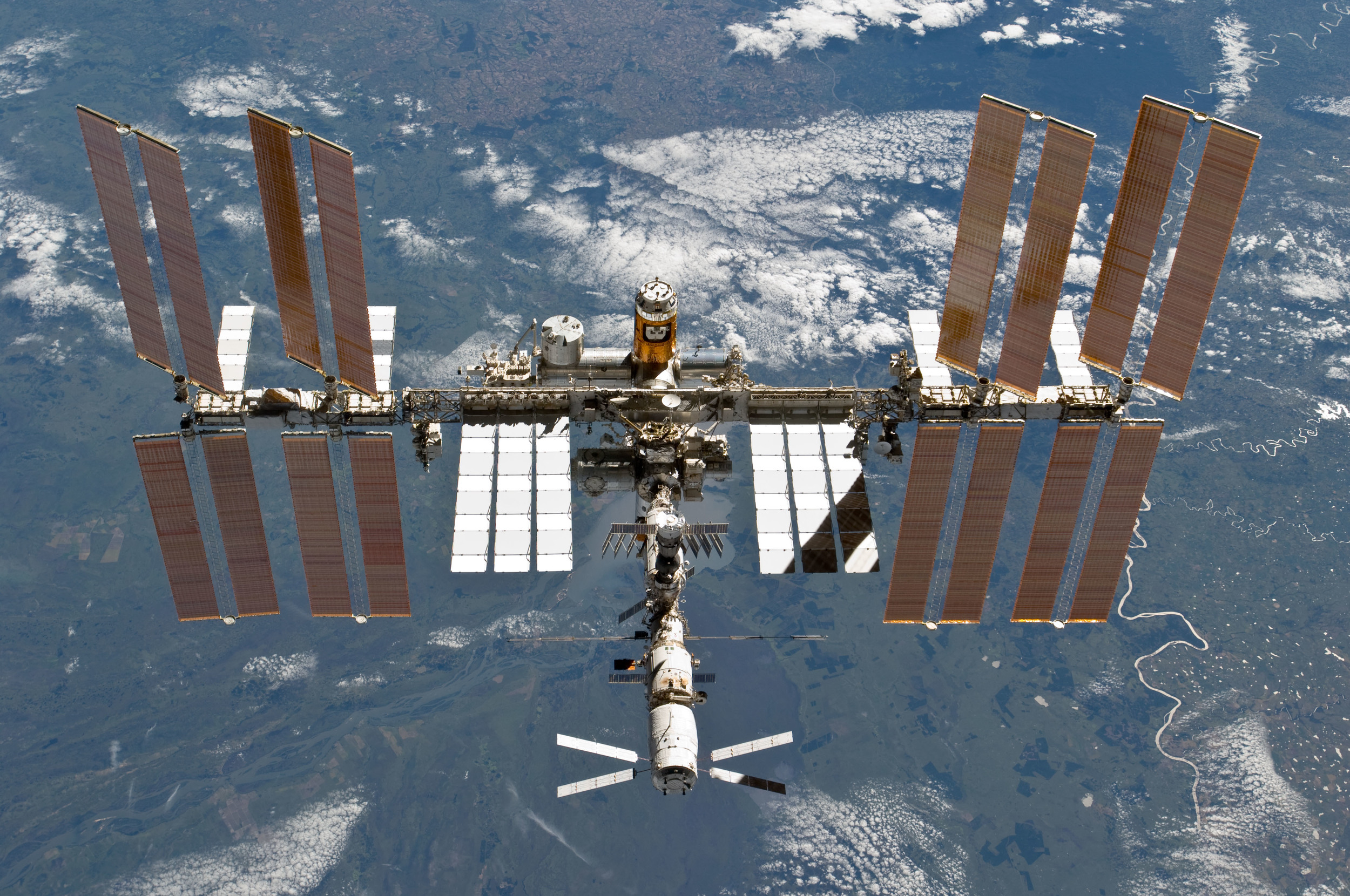
Family portrait
After STS-133 departed the ISS, space shuttle Discovery flew around the outpost. Pictured here are all the originally planned government cargo ships. Photo Credit: NASA
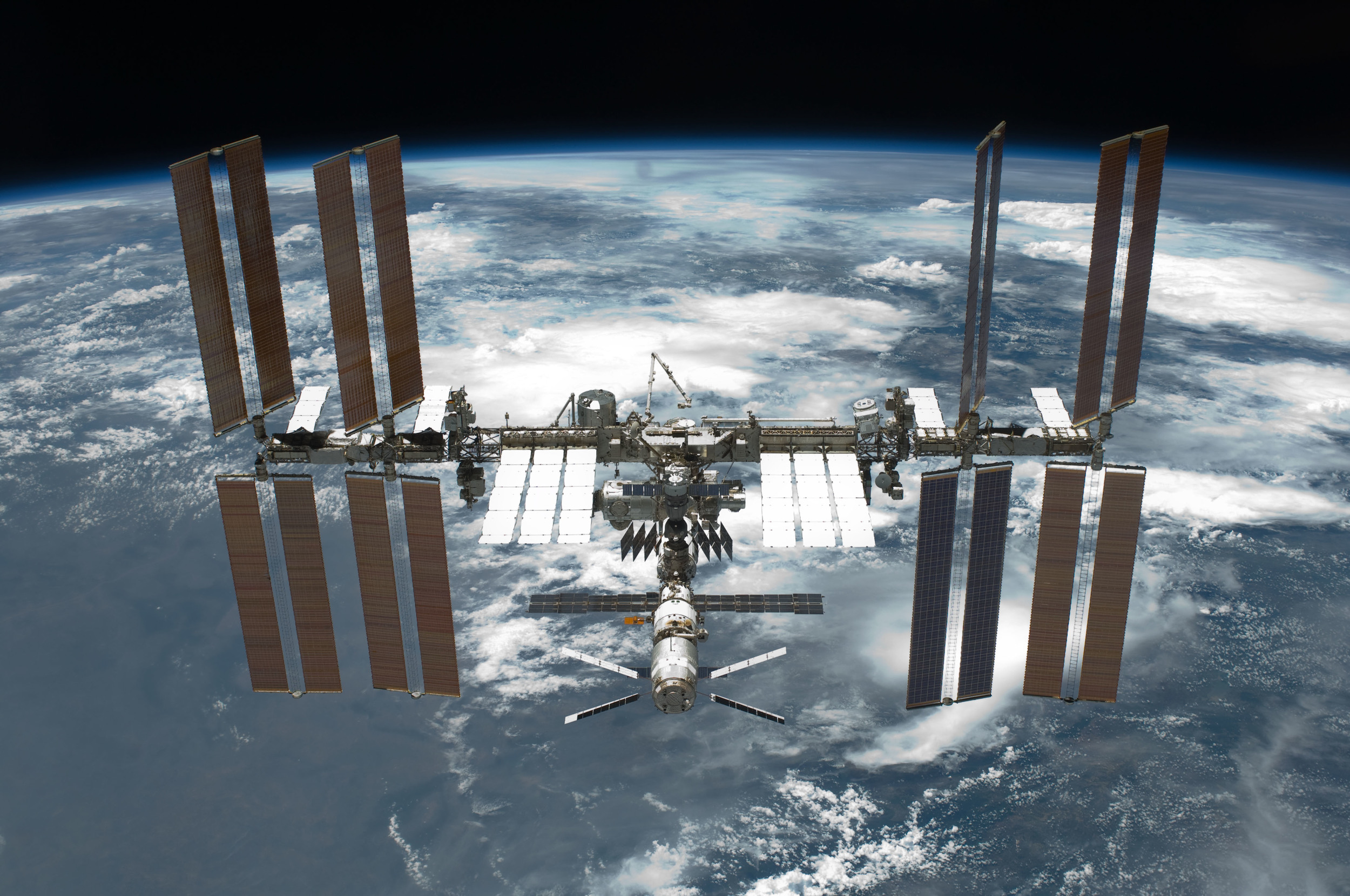
Alpha Magnetic Spectrometer
The AMS-2 experiment and the Orbiter Boom Sensor System were attached to the Integrated Truss Structure in May 2011. Photo Credit: NASA
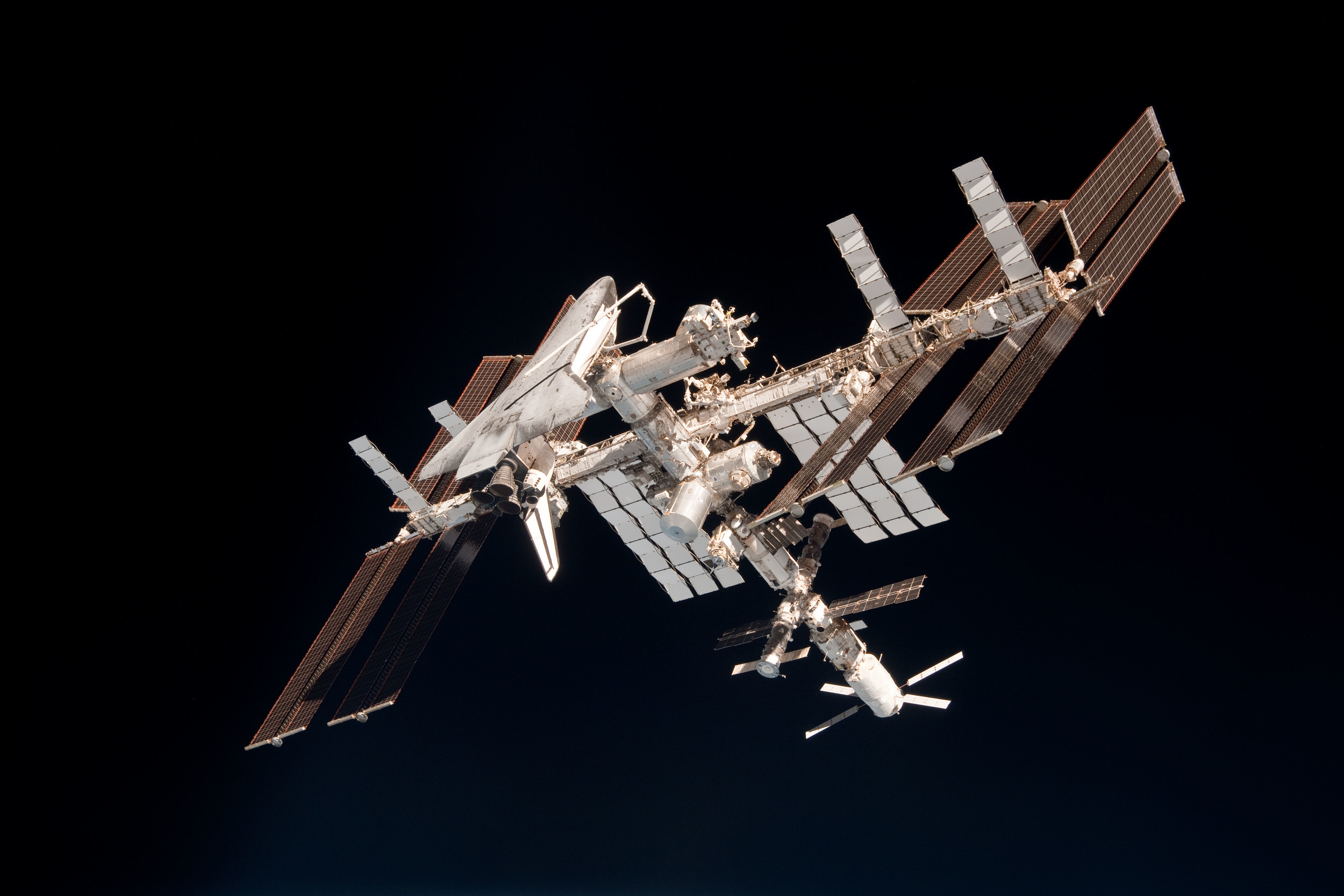
Shuttle and Station
As a Soyuz departs the outpost in May 2011, the crew snaps this photo of both the space shuttle Endeavour and ISS docked together. Photo Credit: NASA

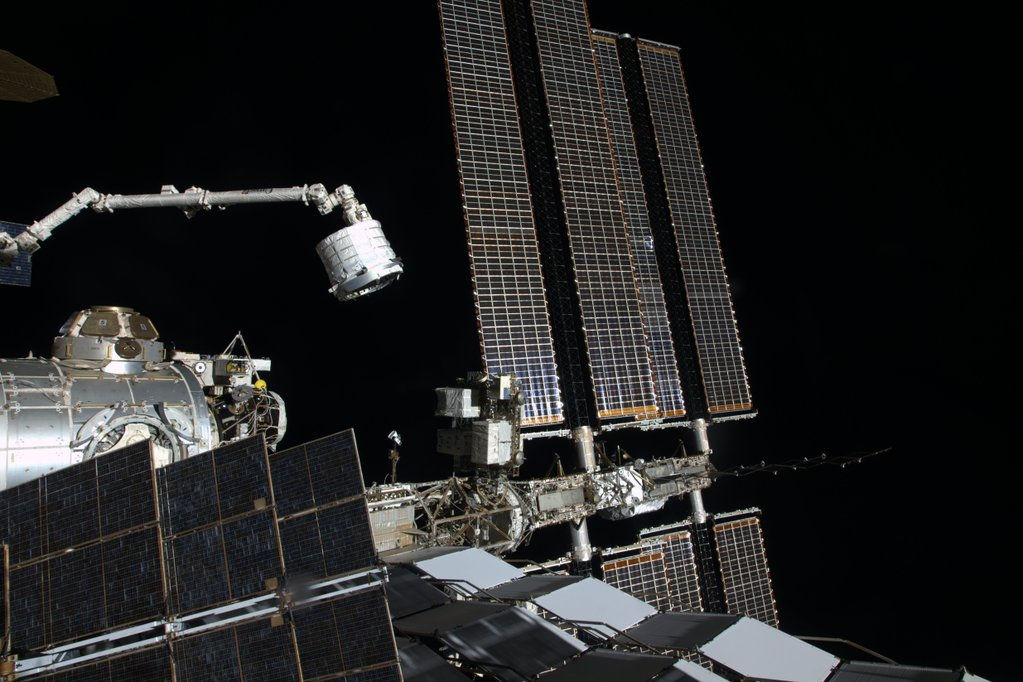
Bigelow Expandable Activity Module
The BEAM was the first post-space shuttle module to be attached to ISS. It was berthed to the aft port of Tranquility in April 2016. Photo Credit: NASA























































